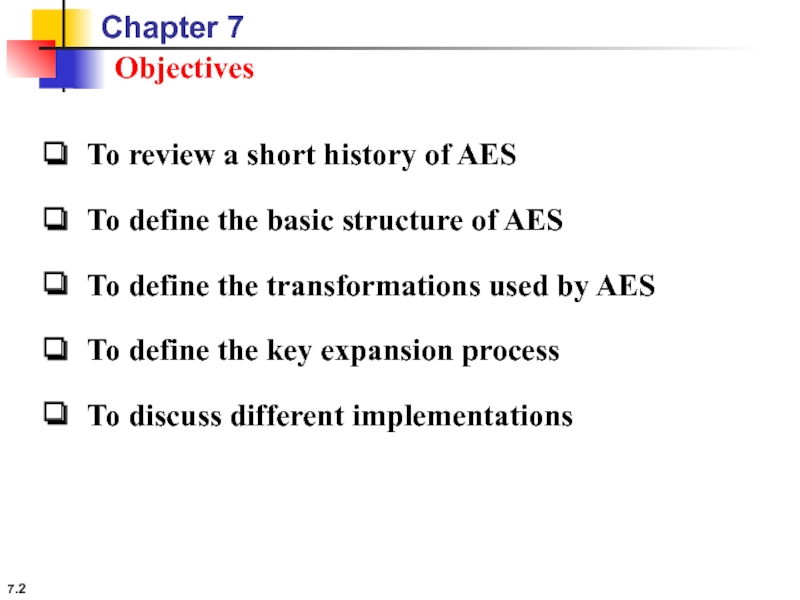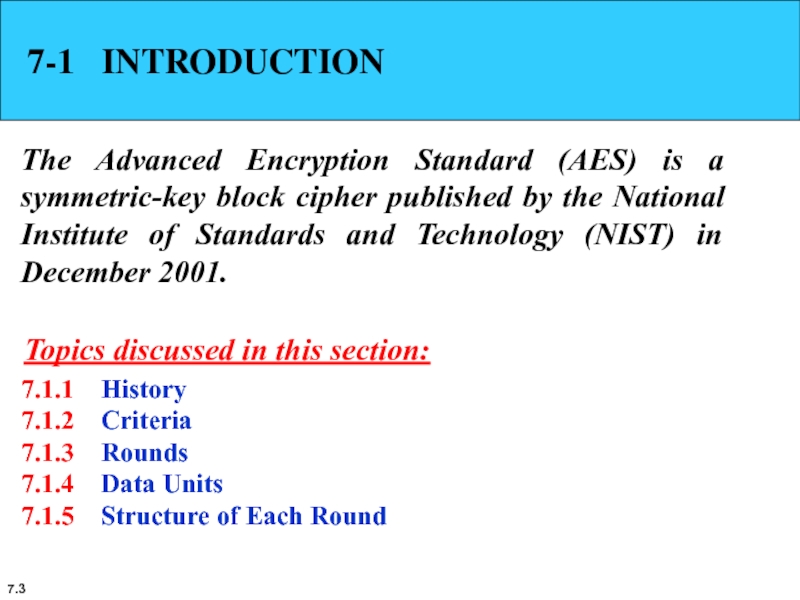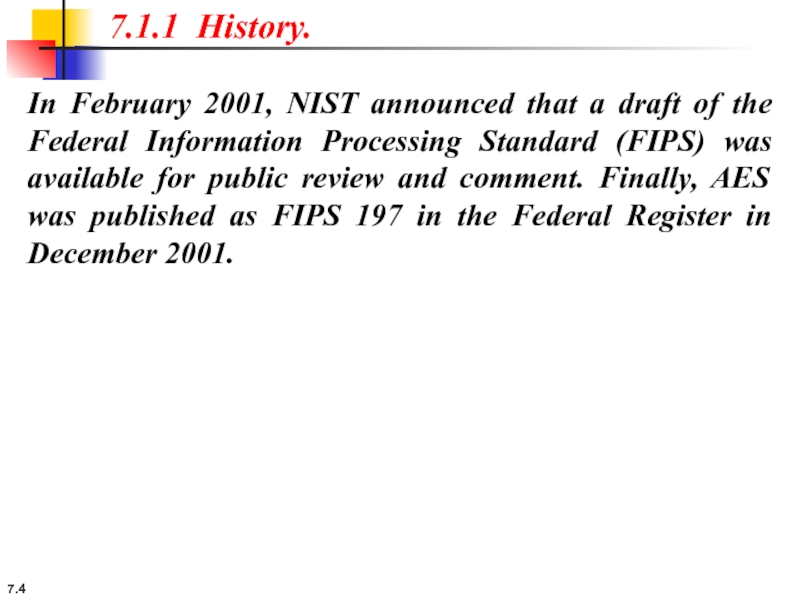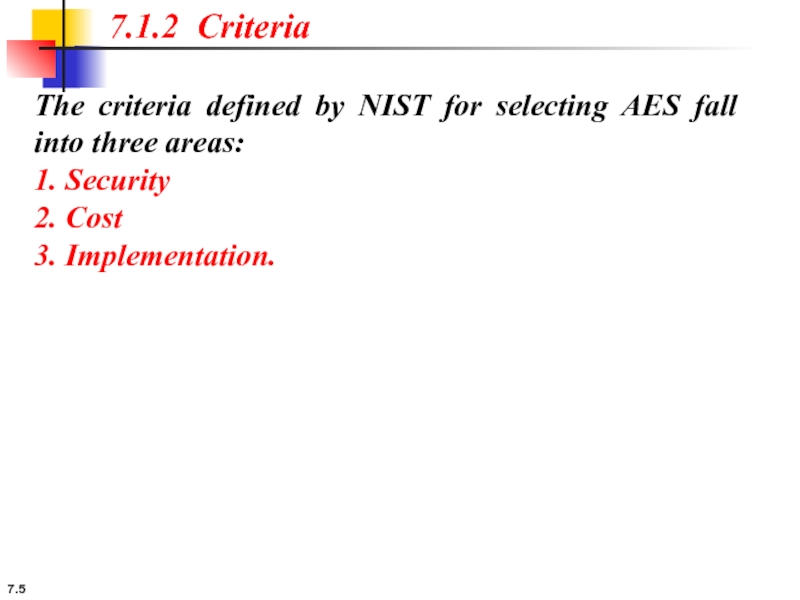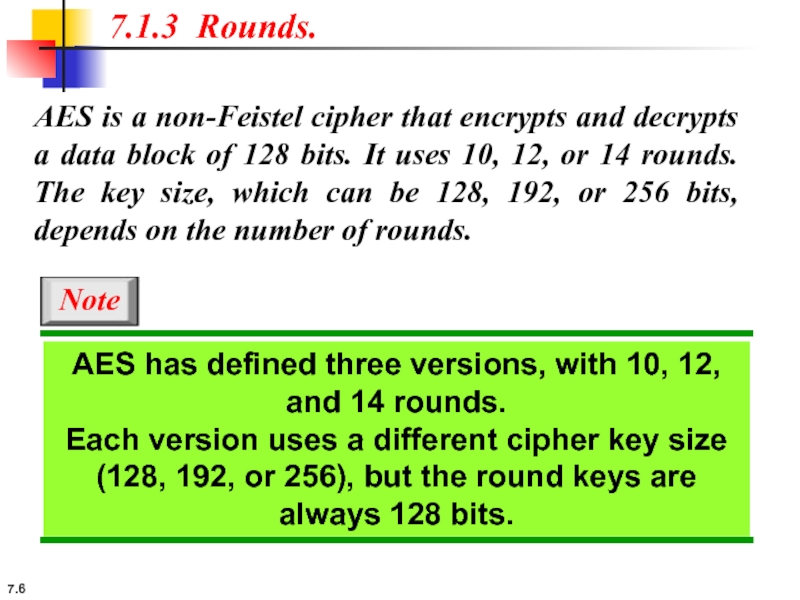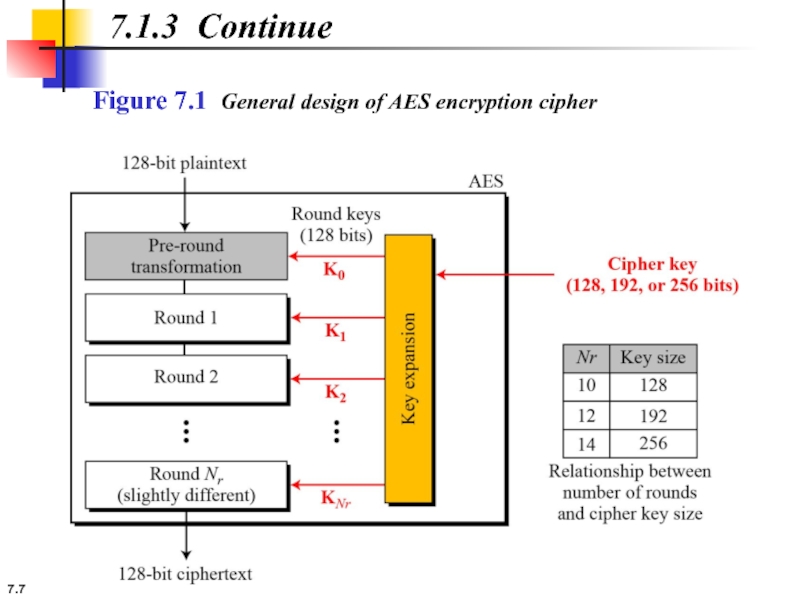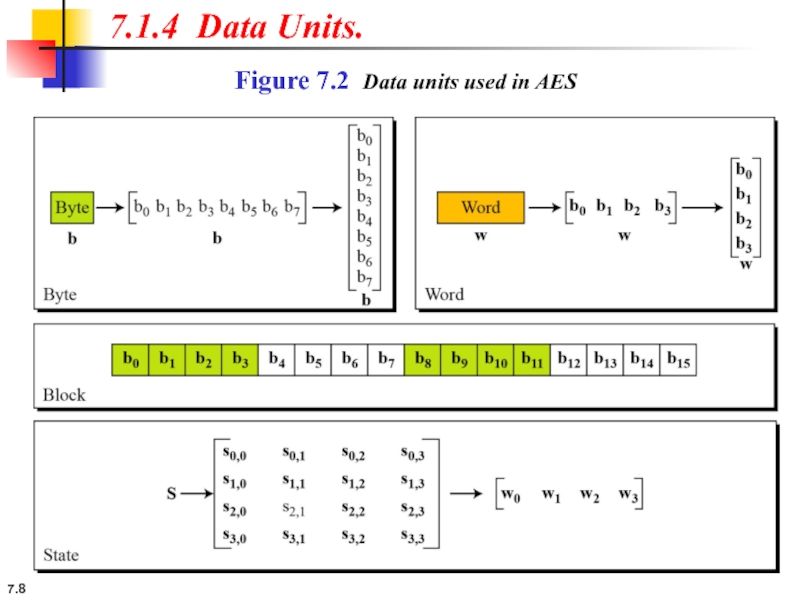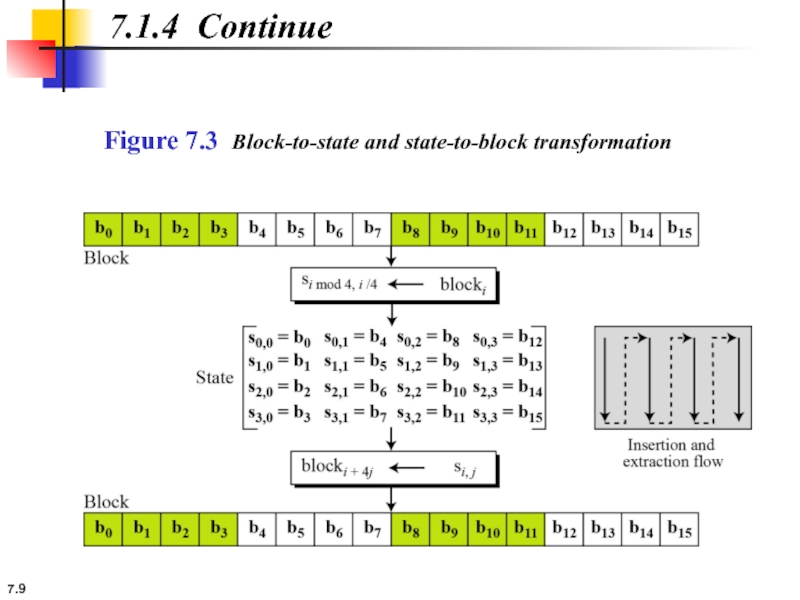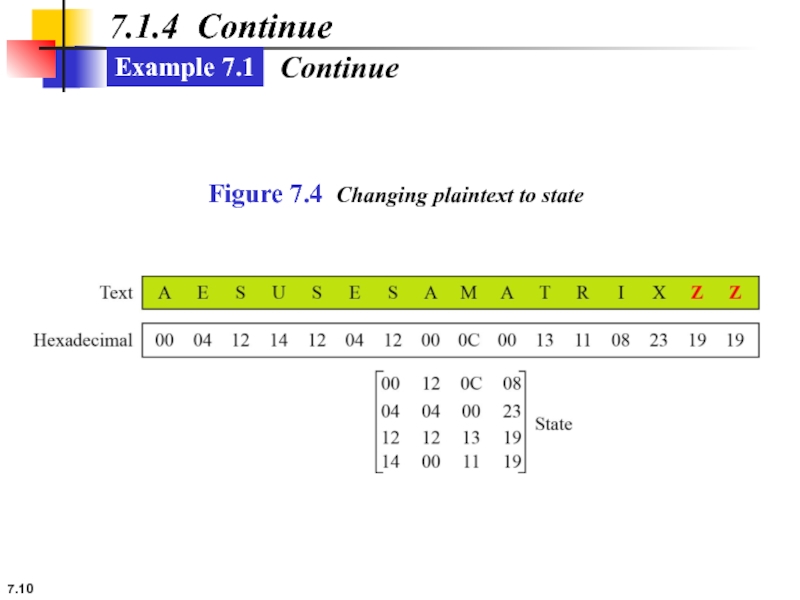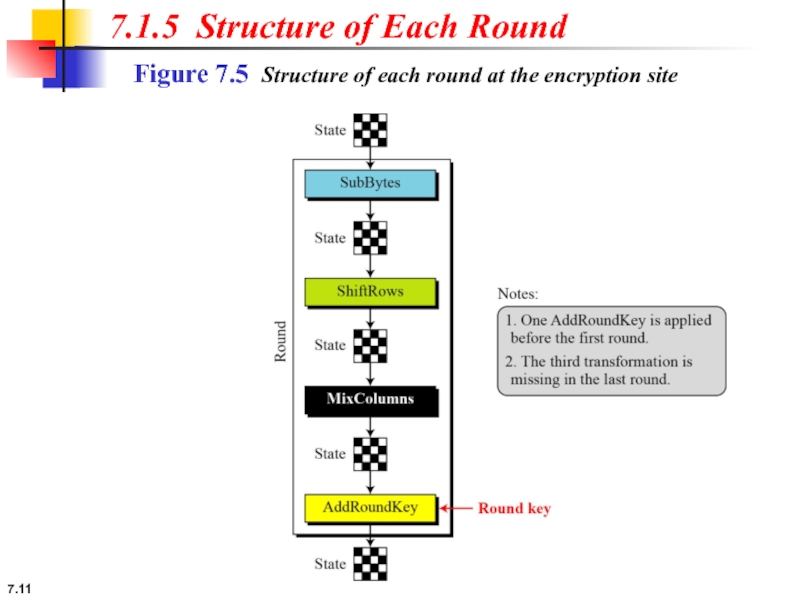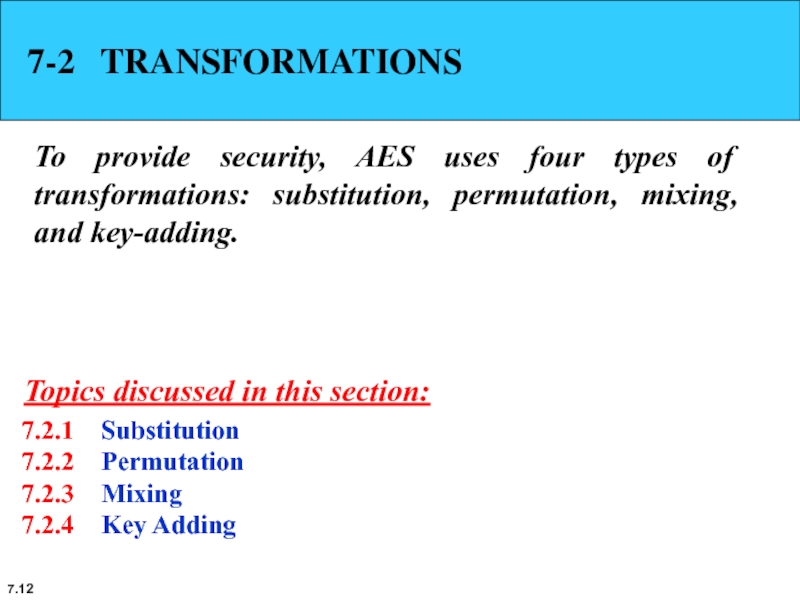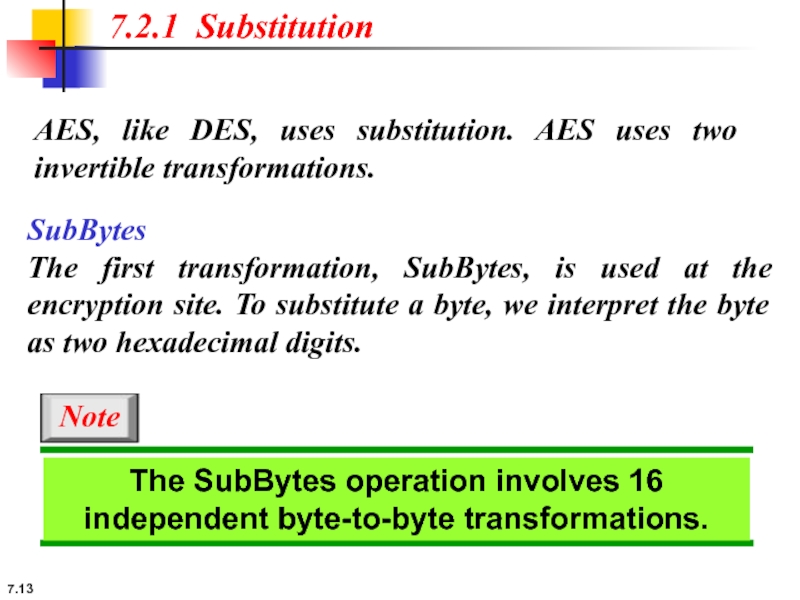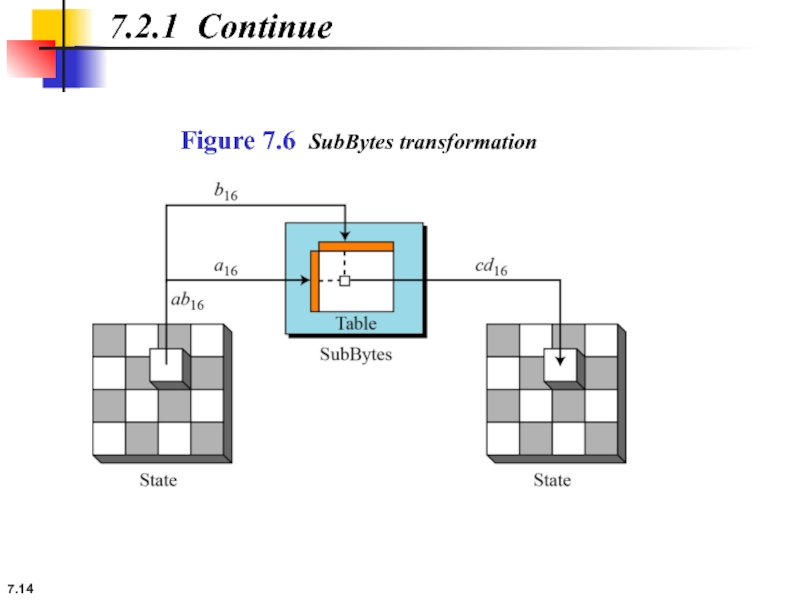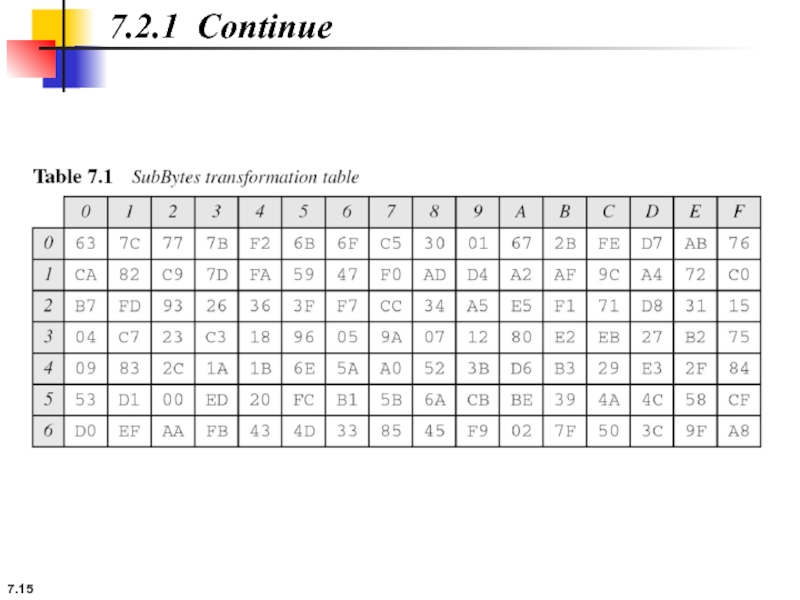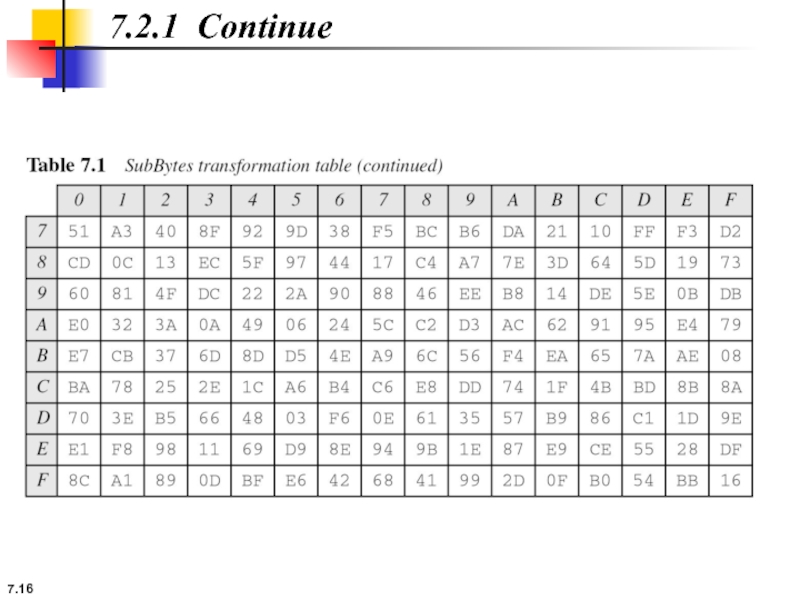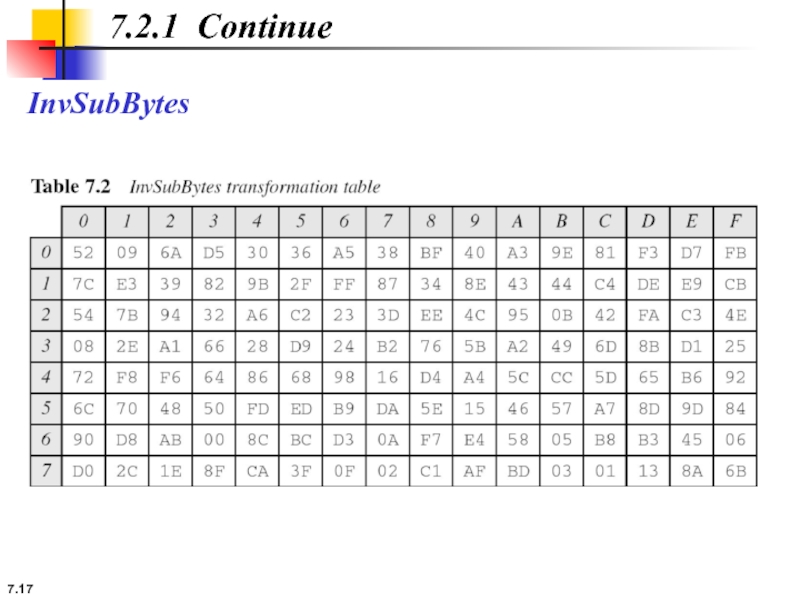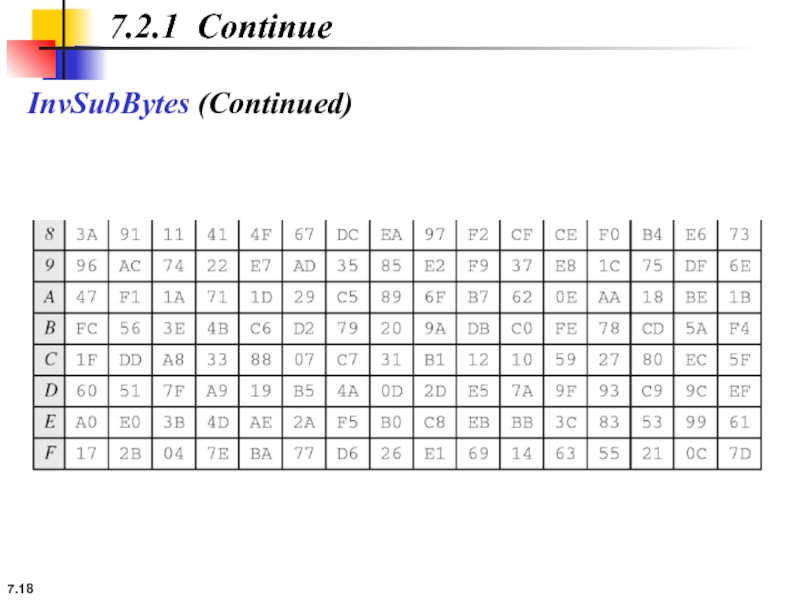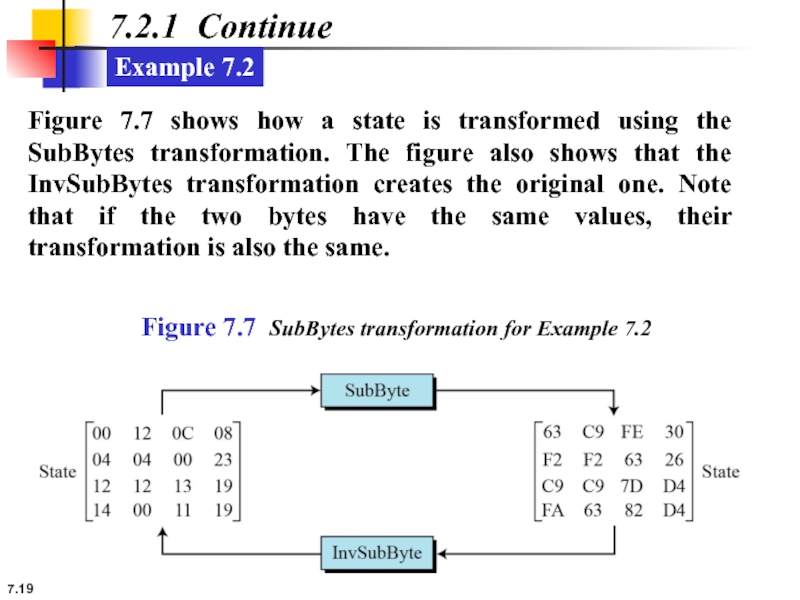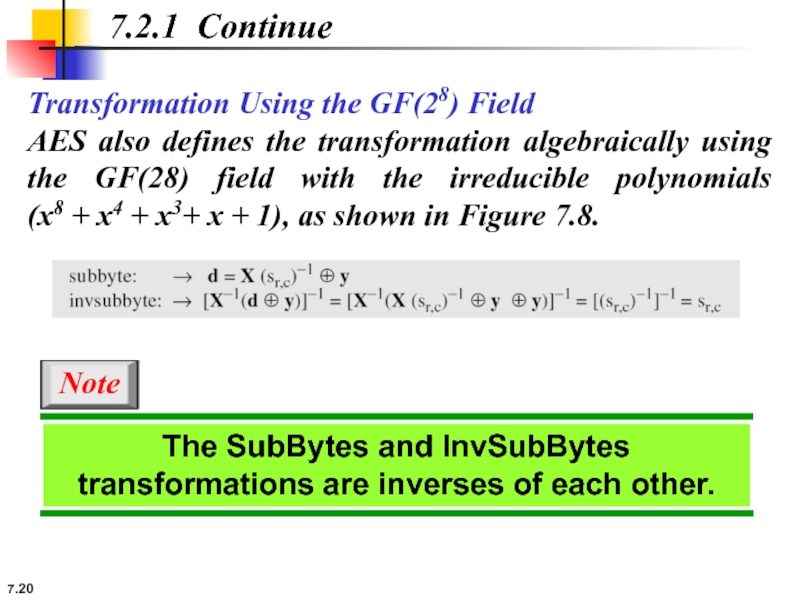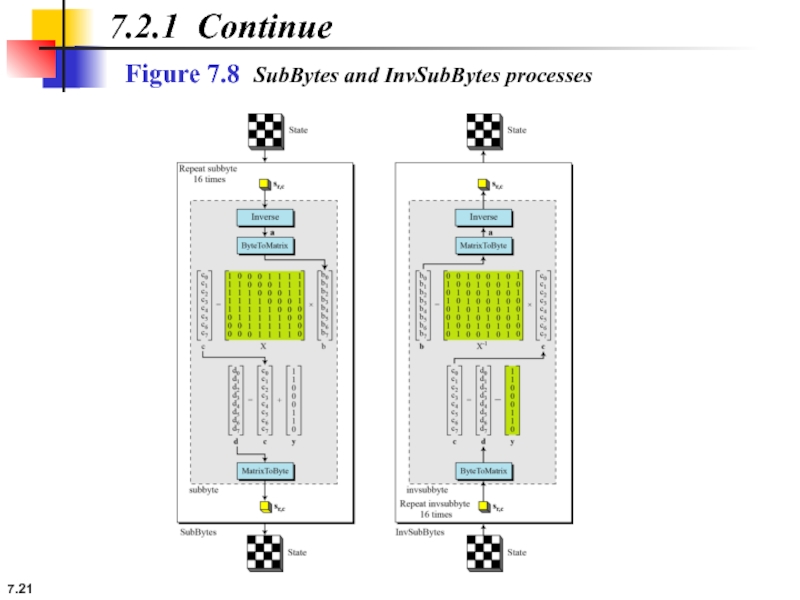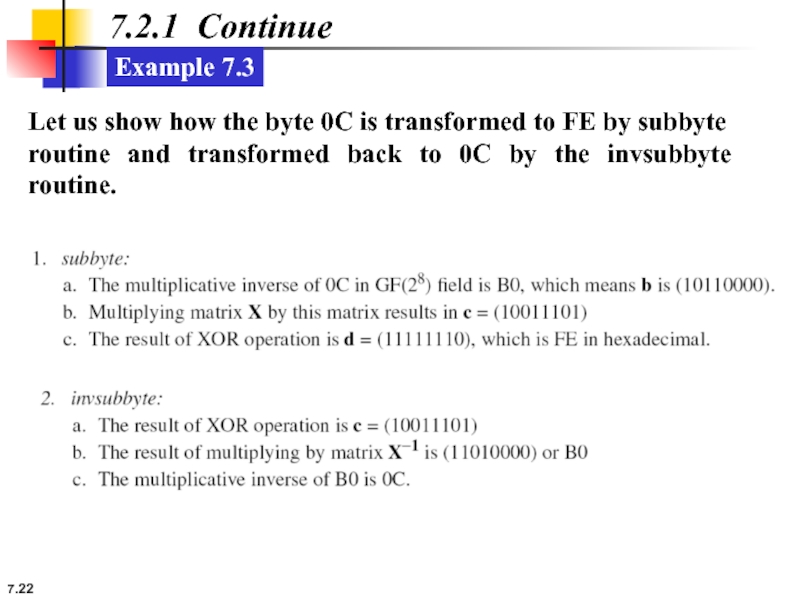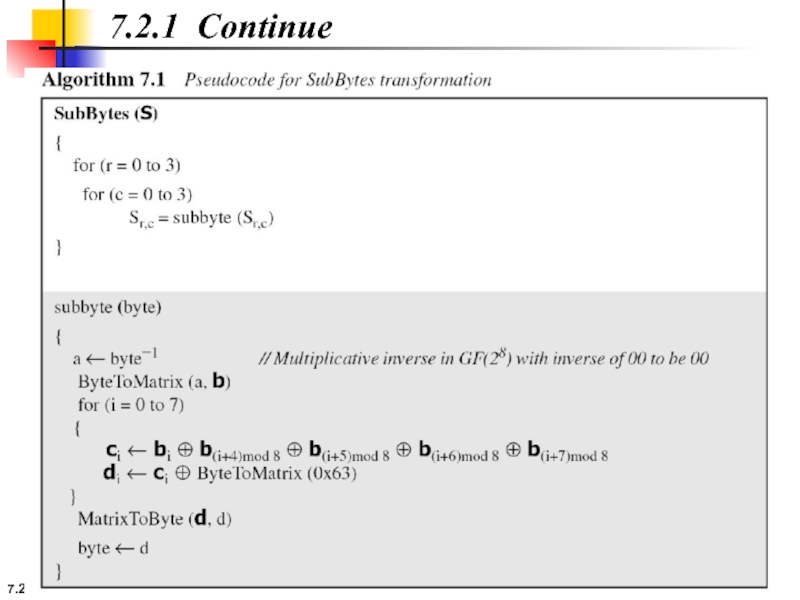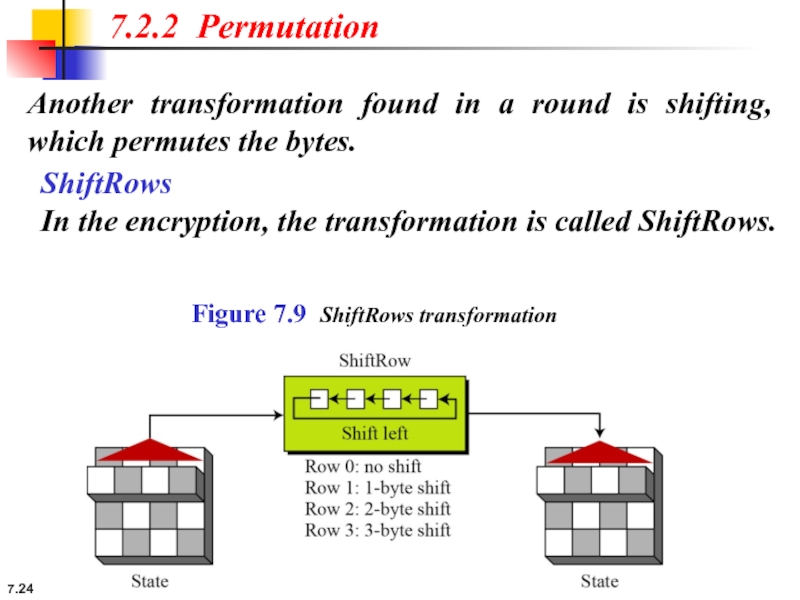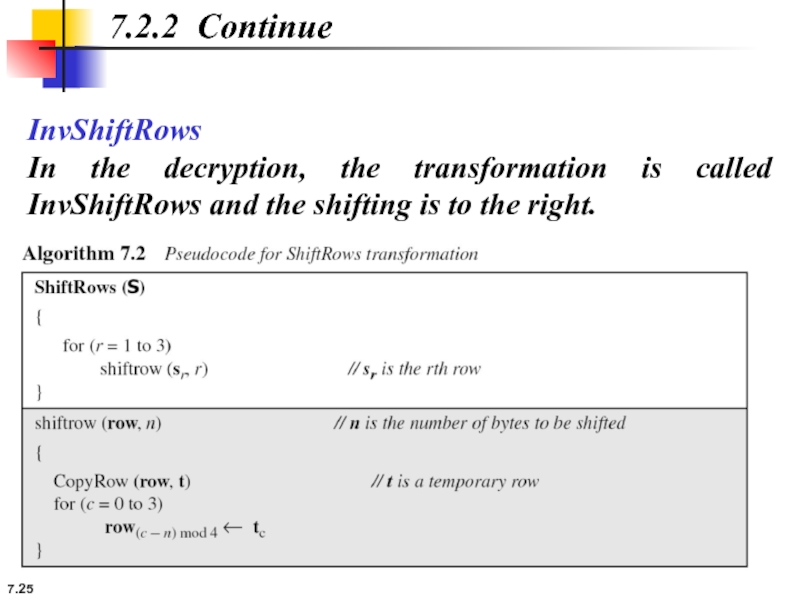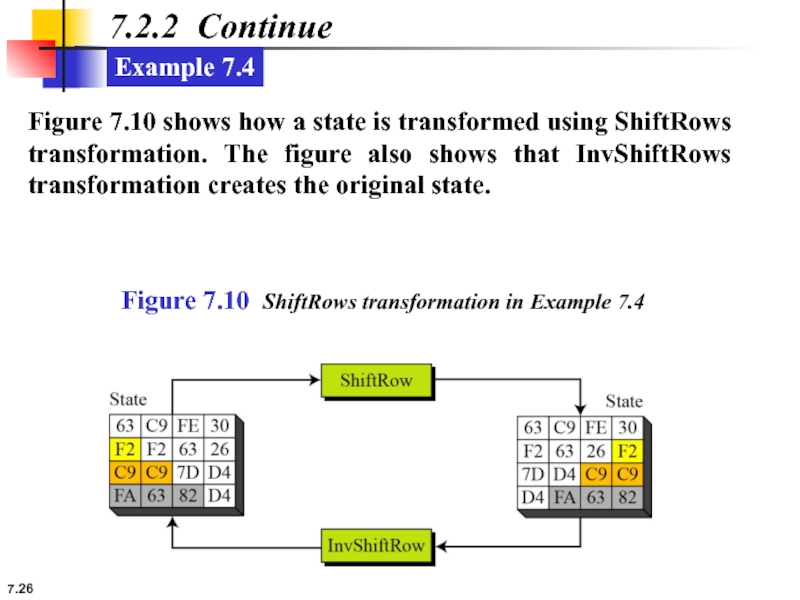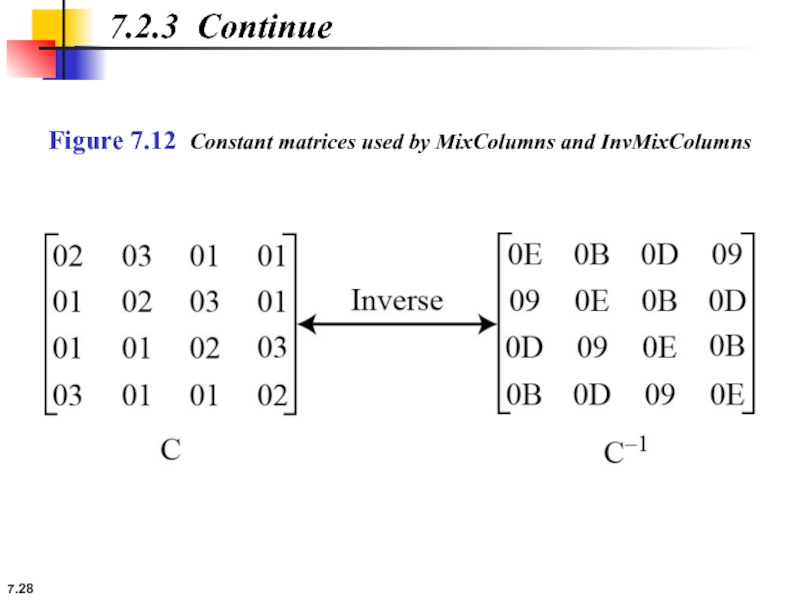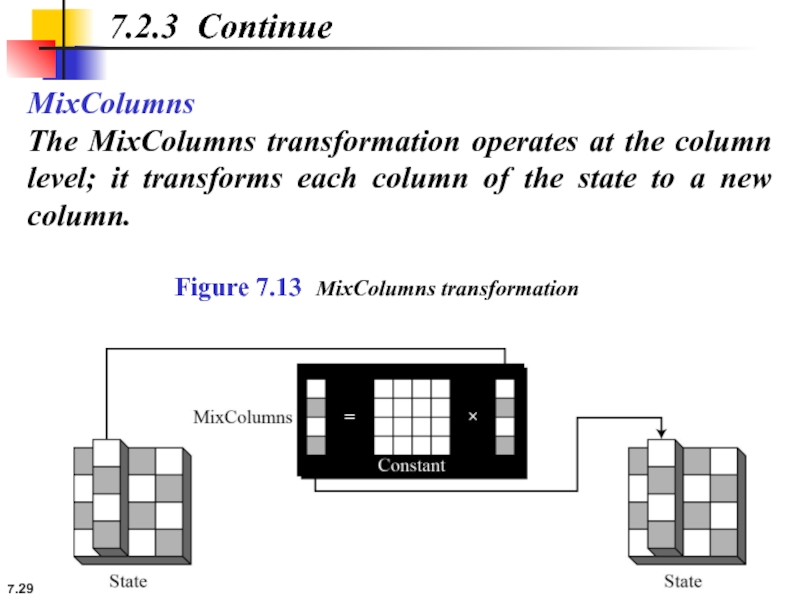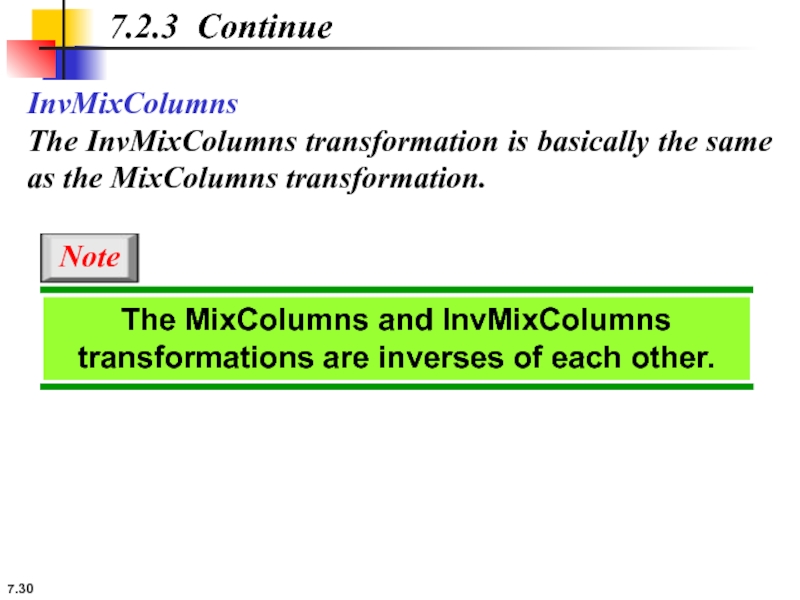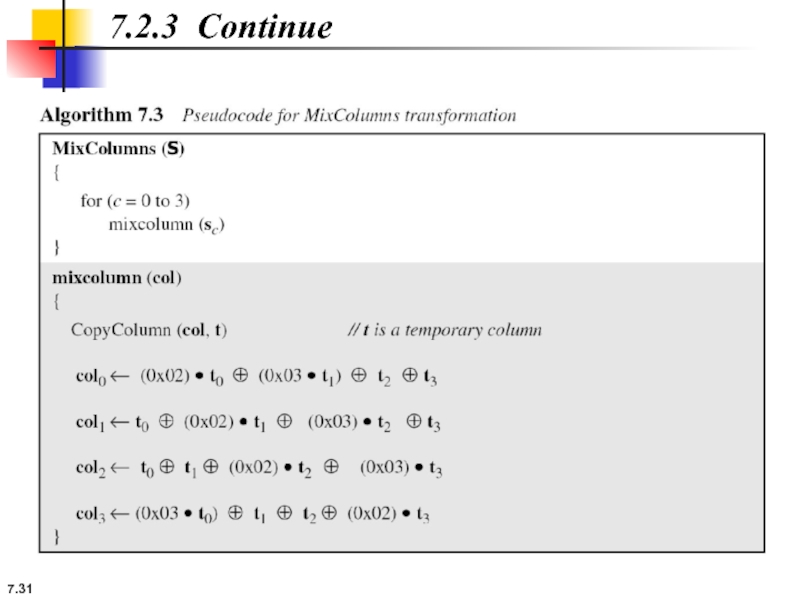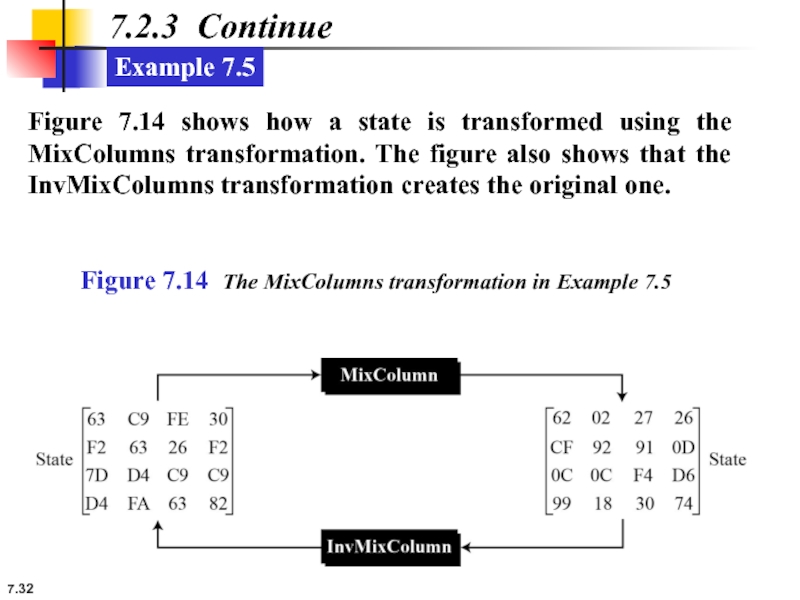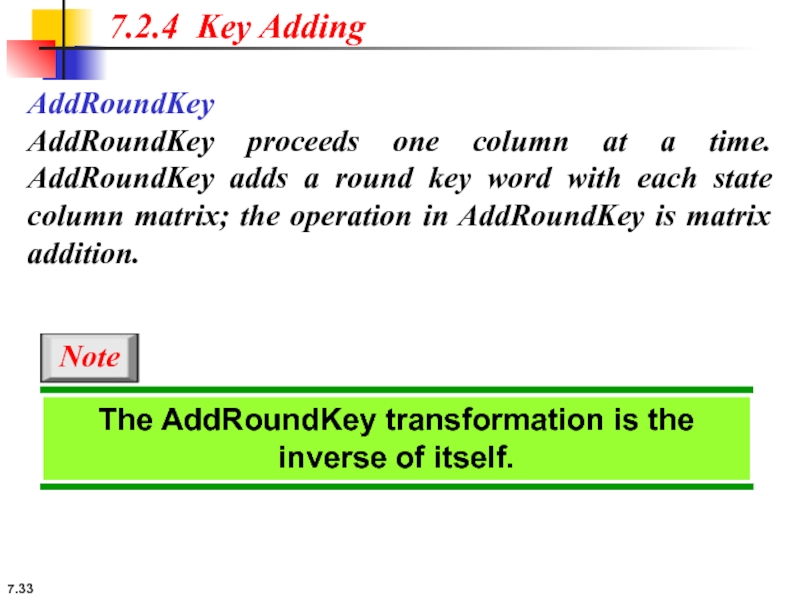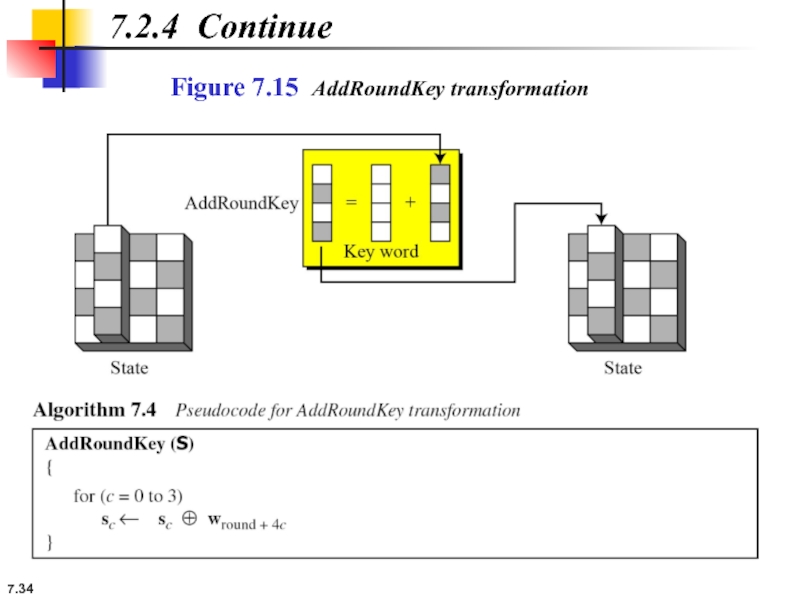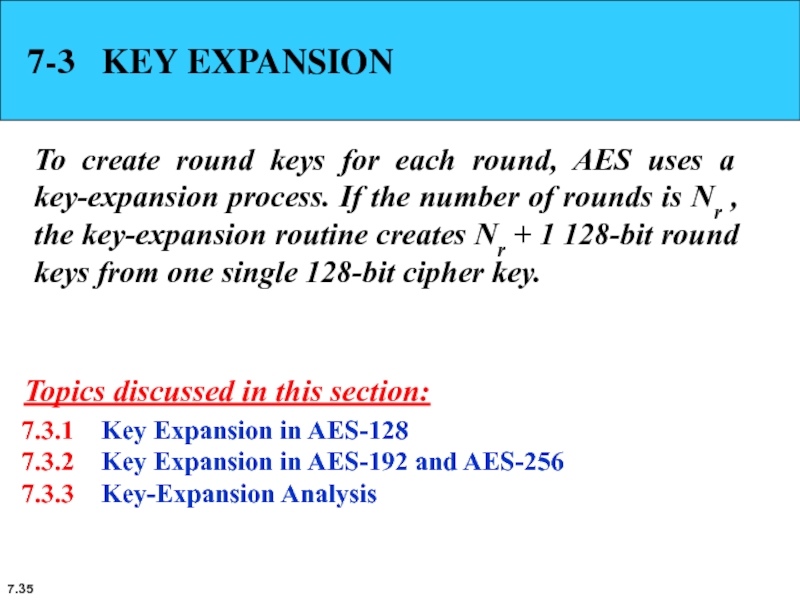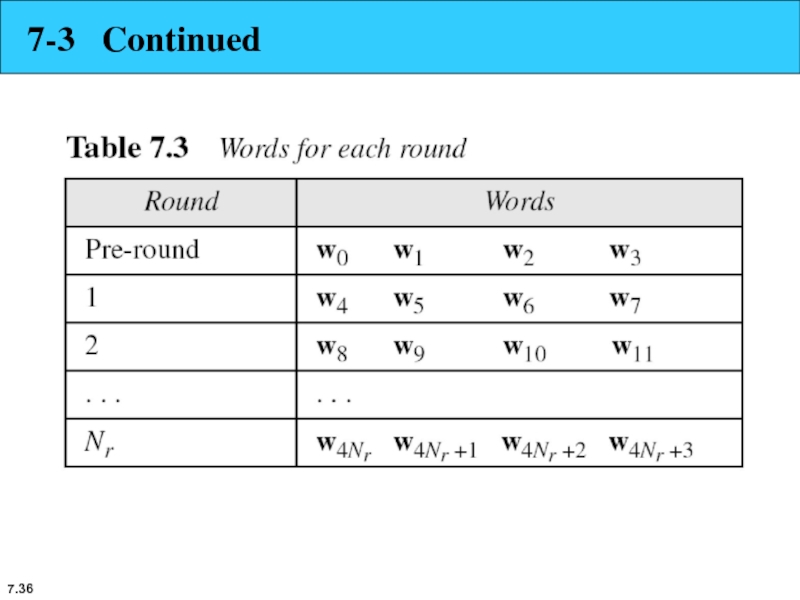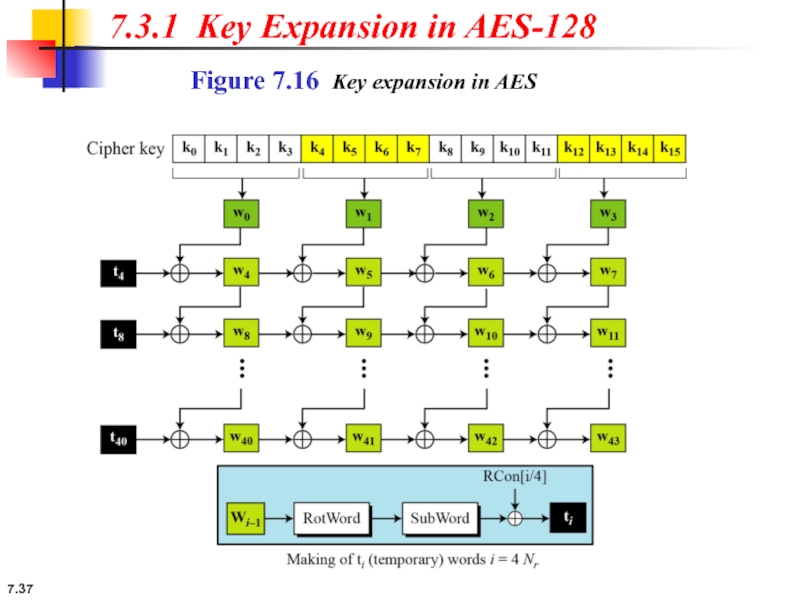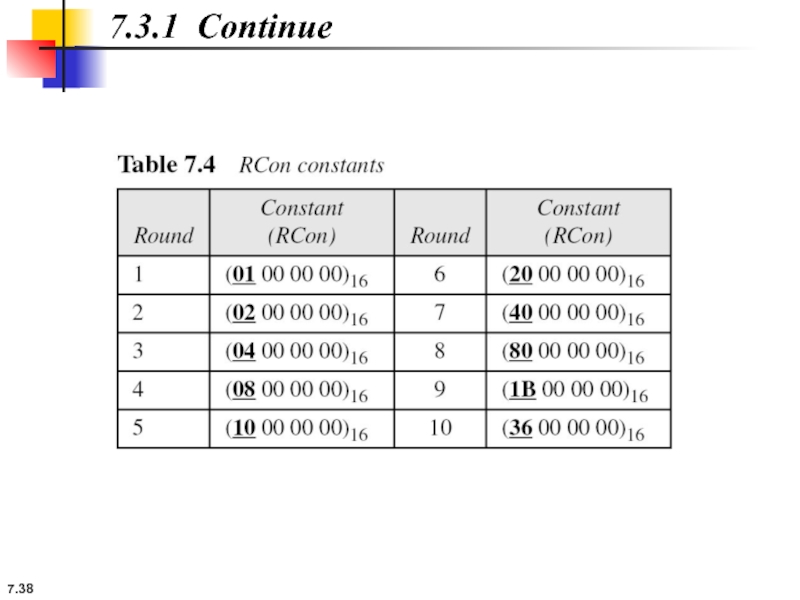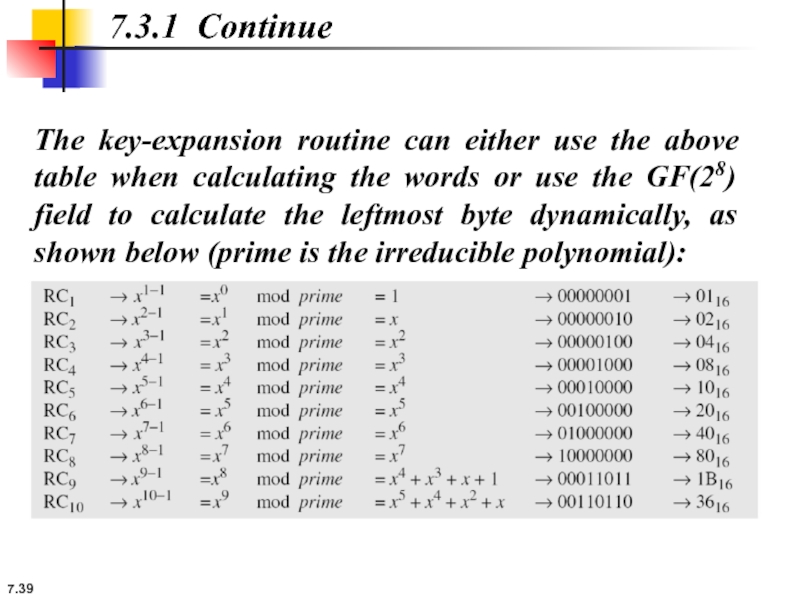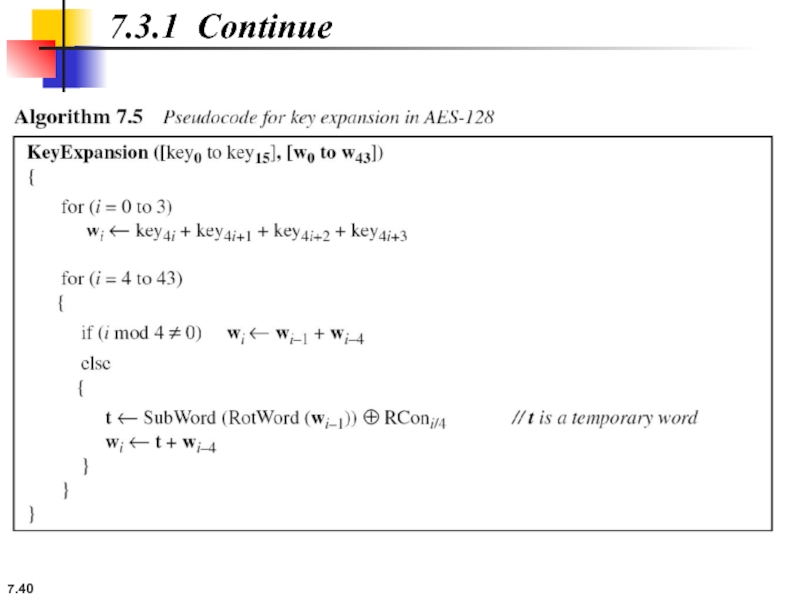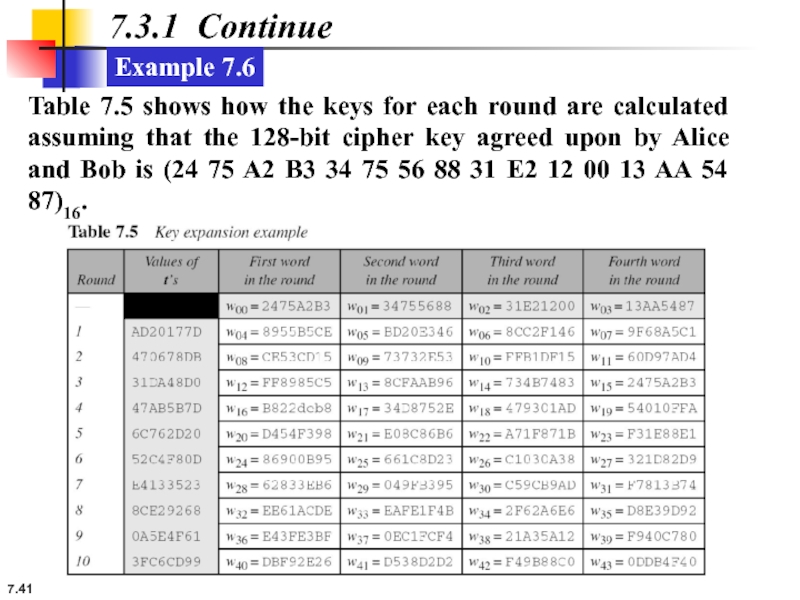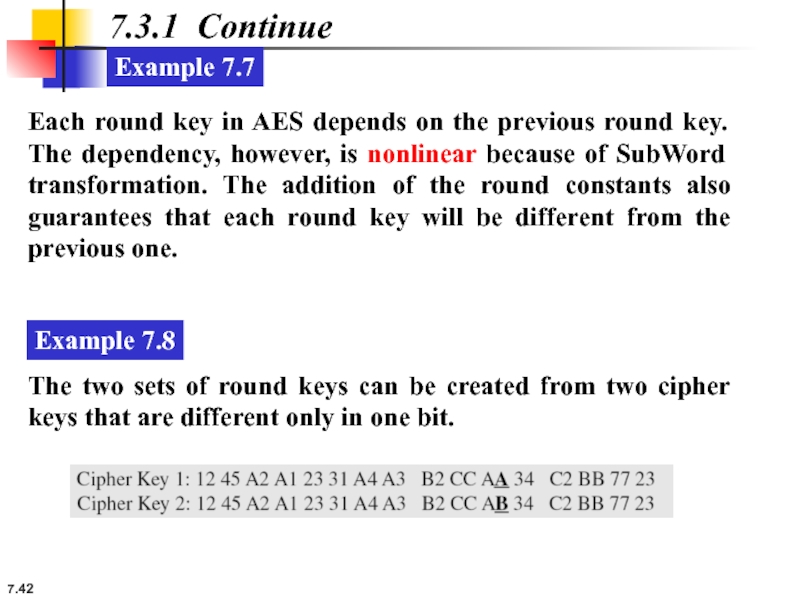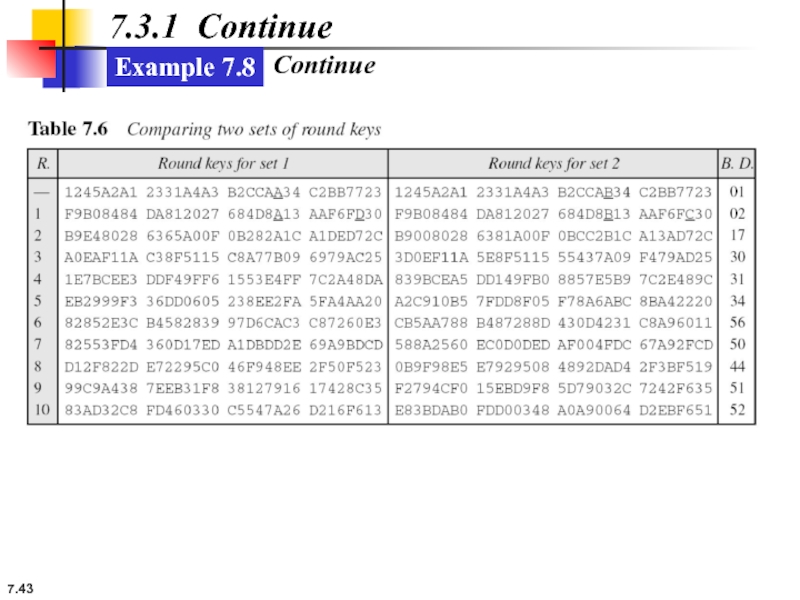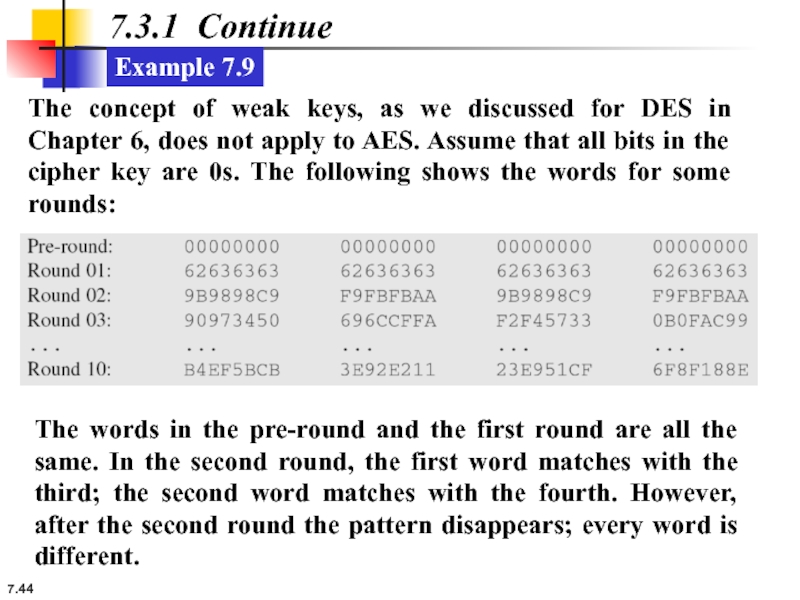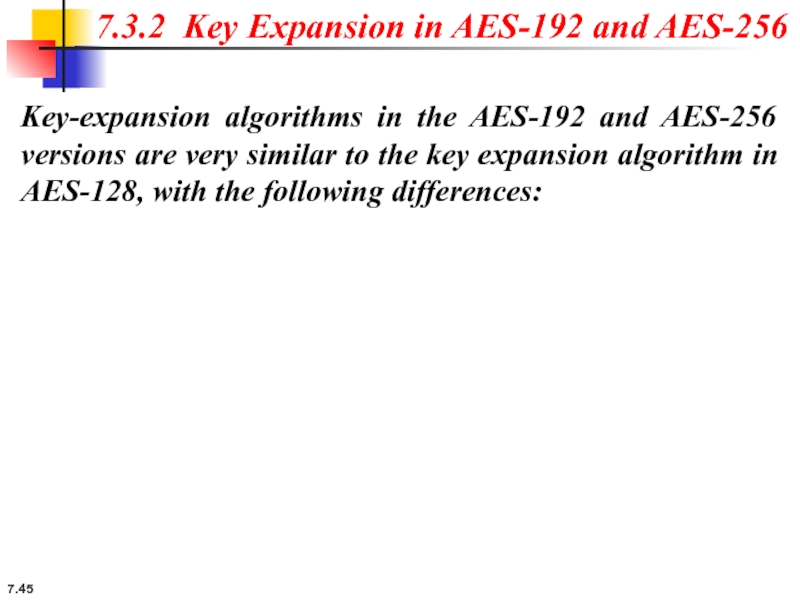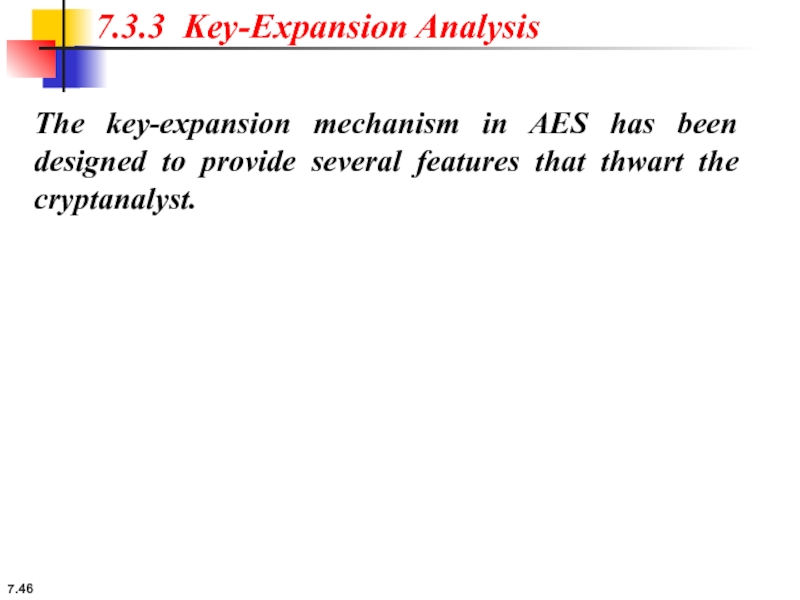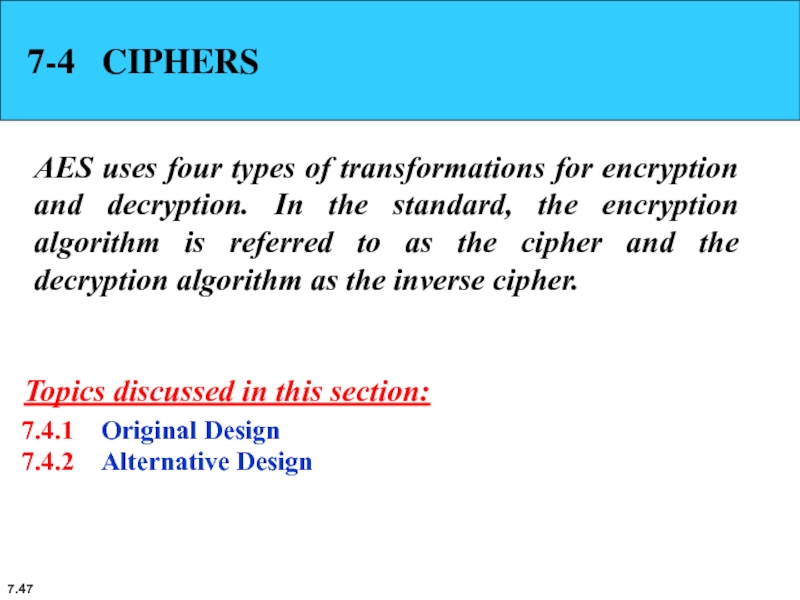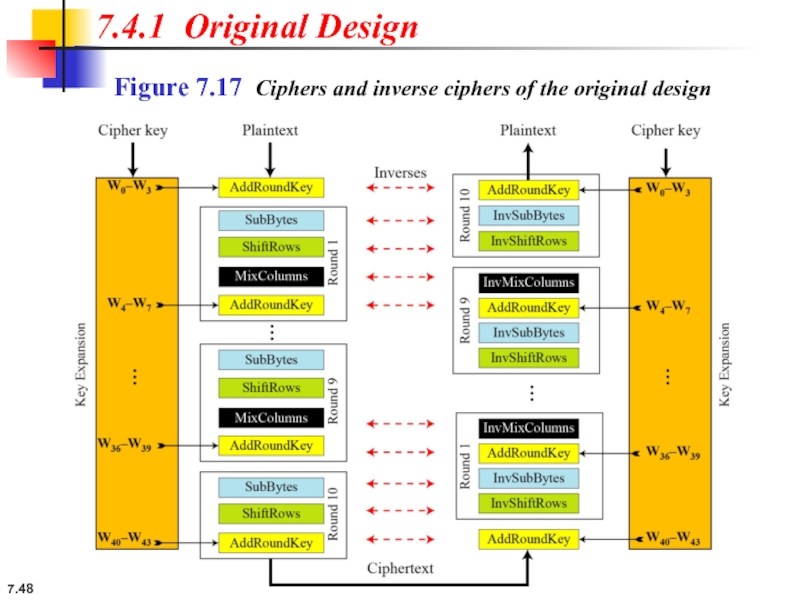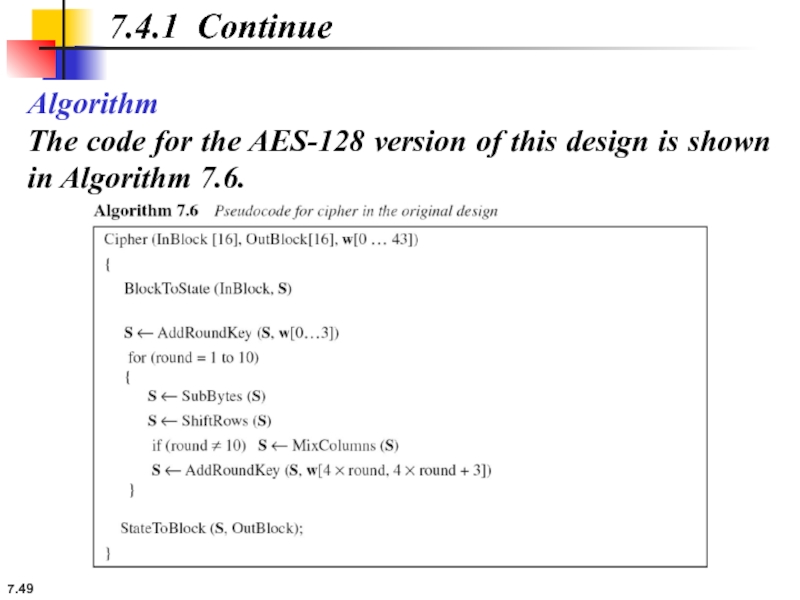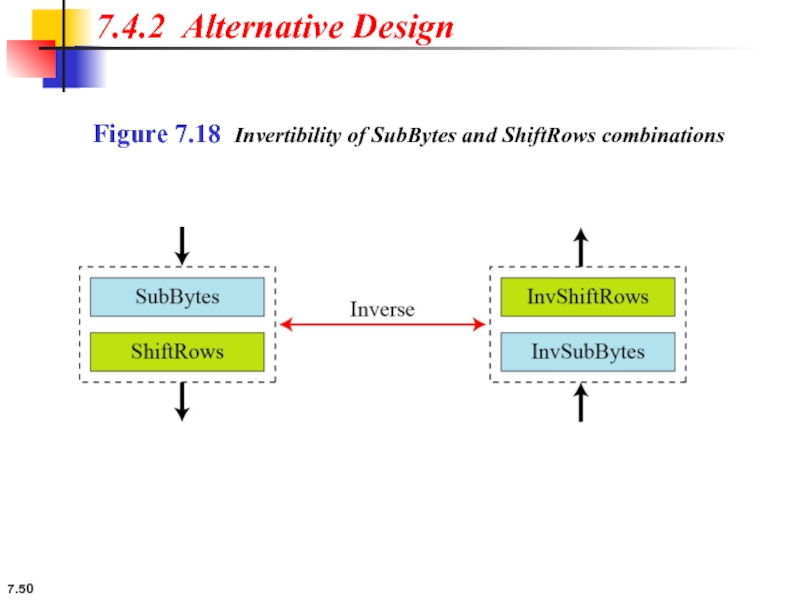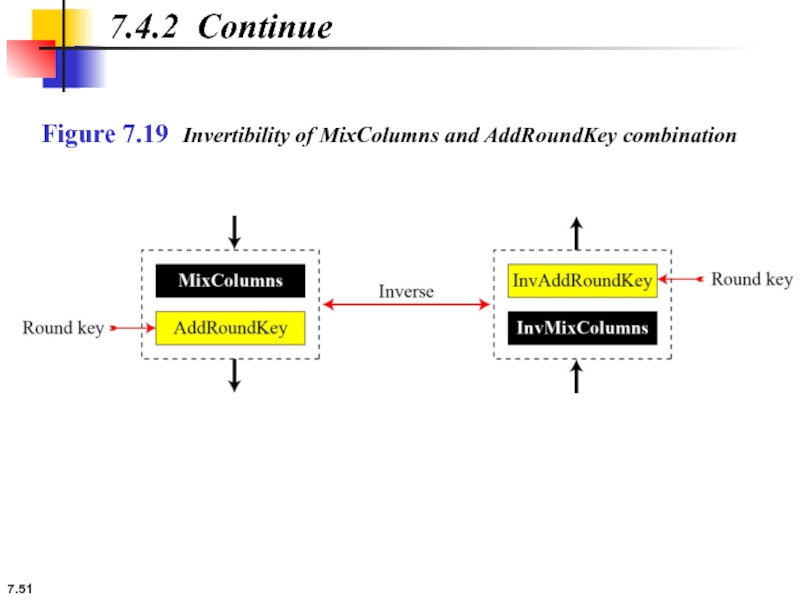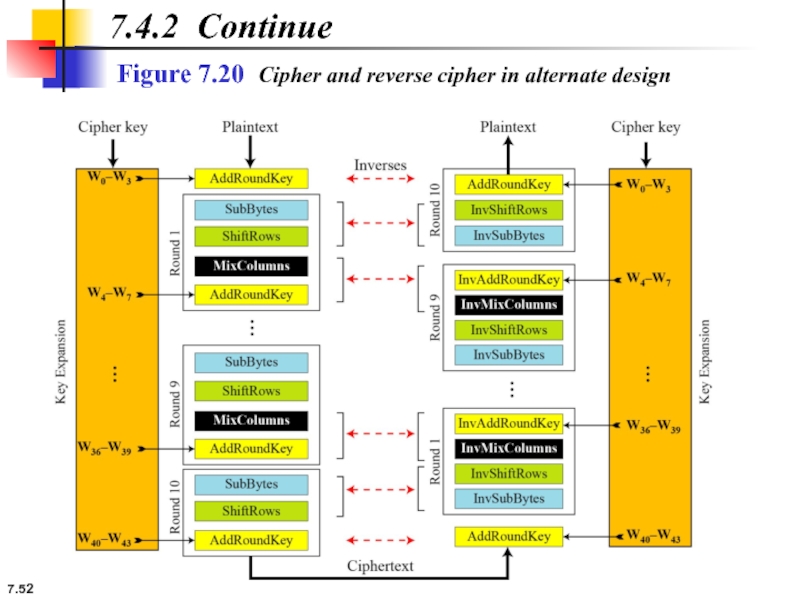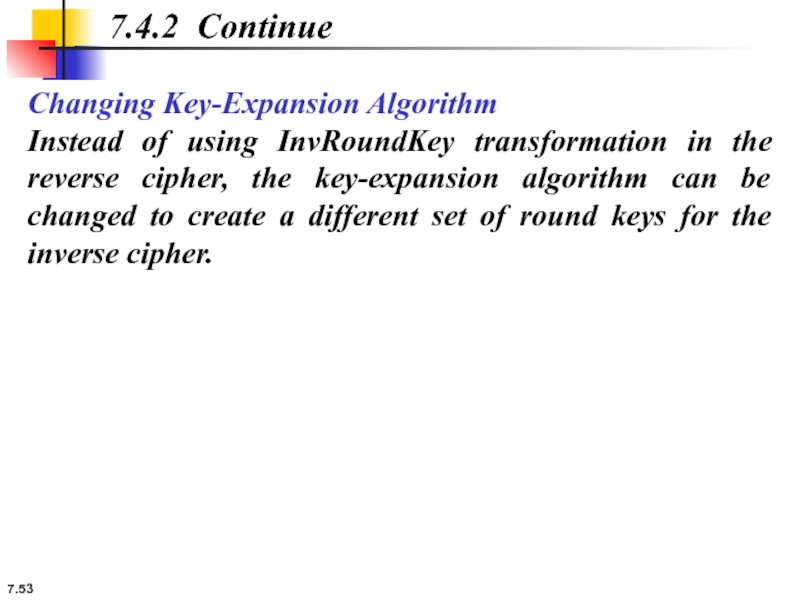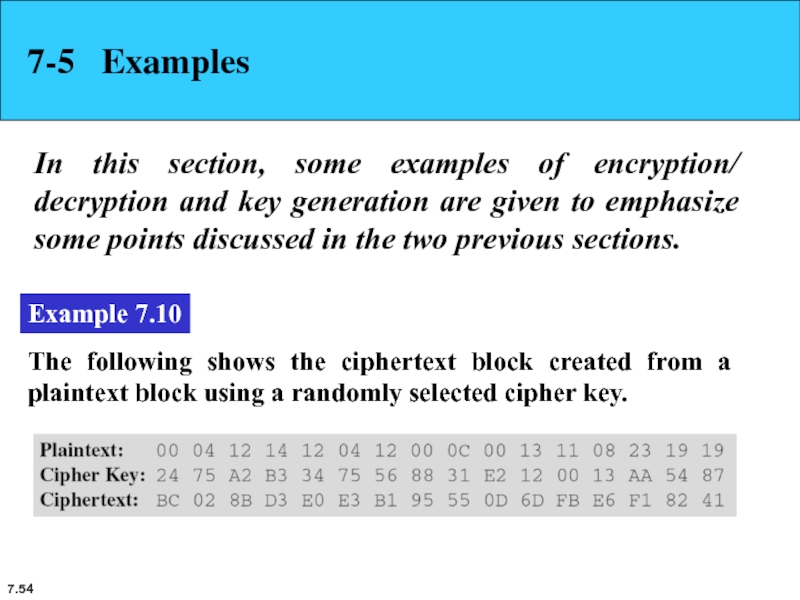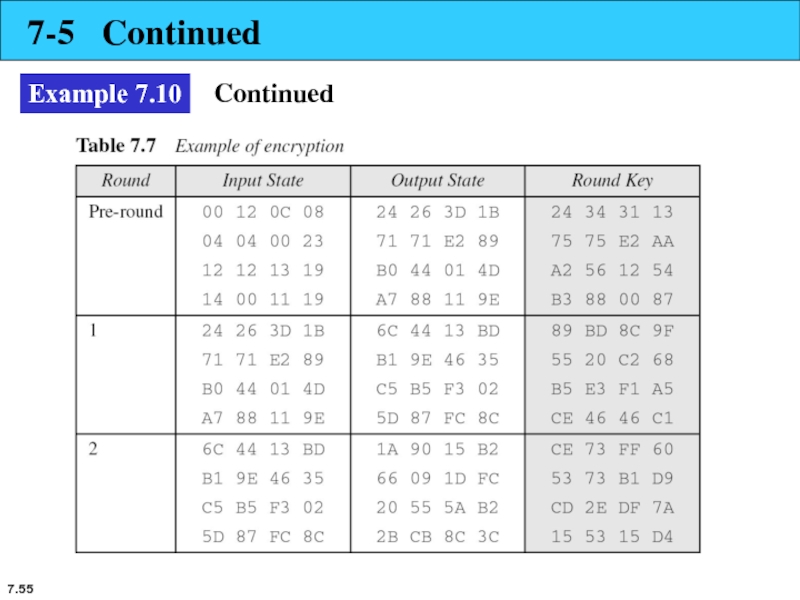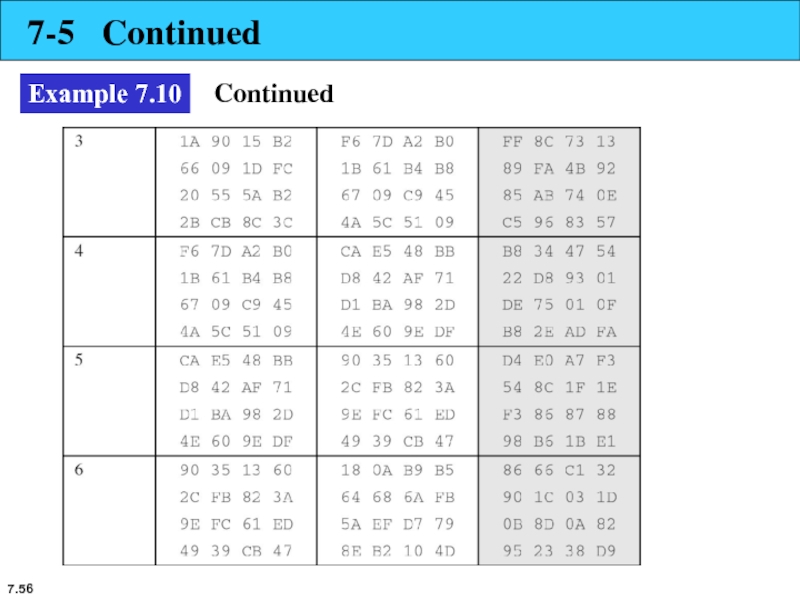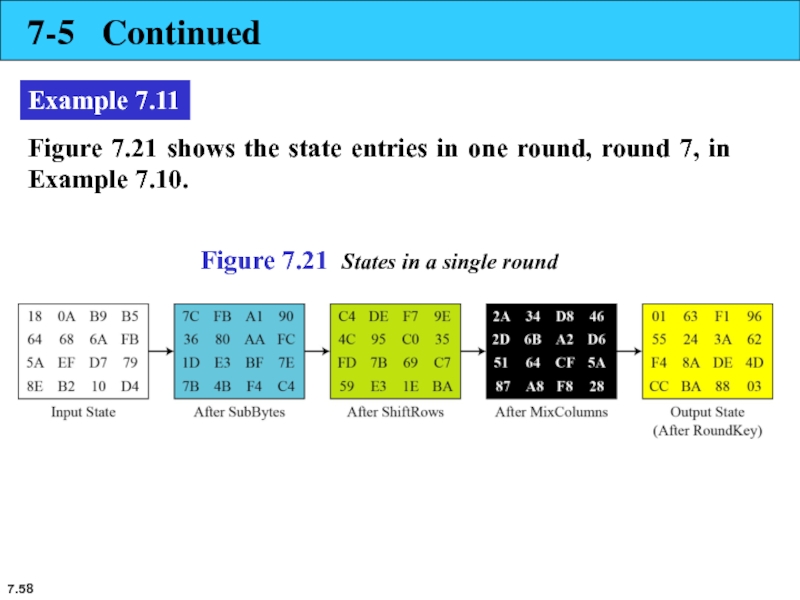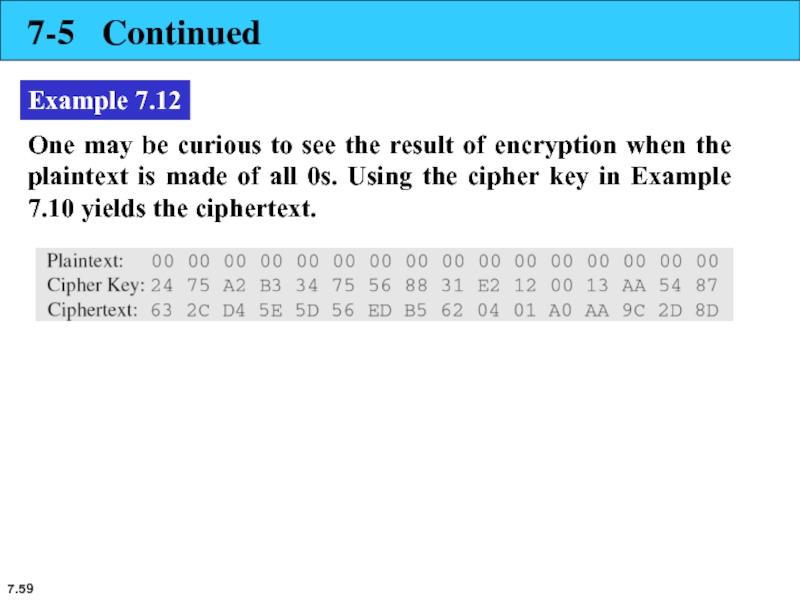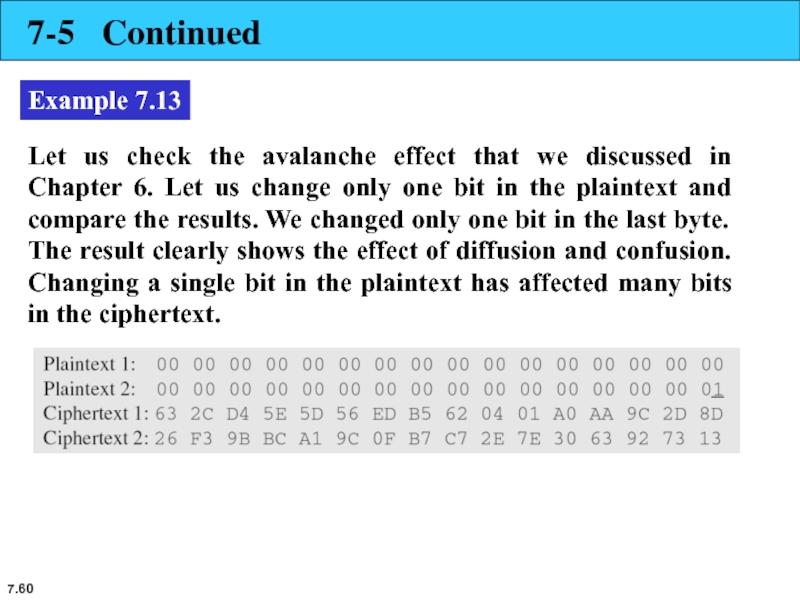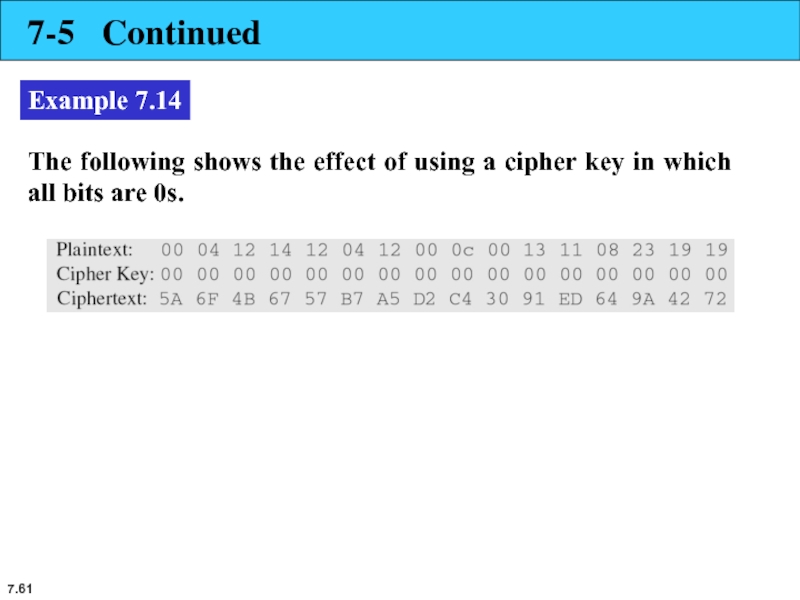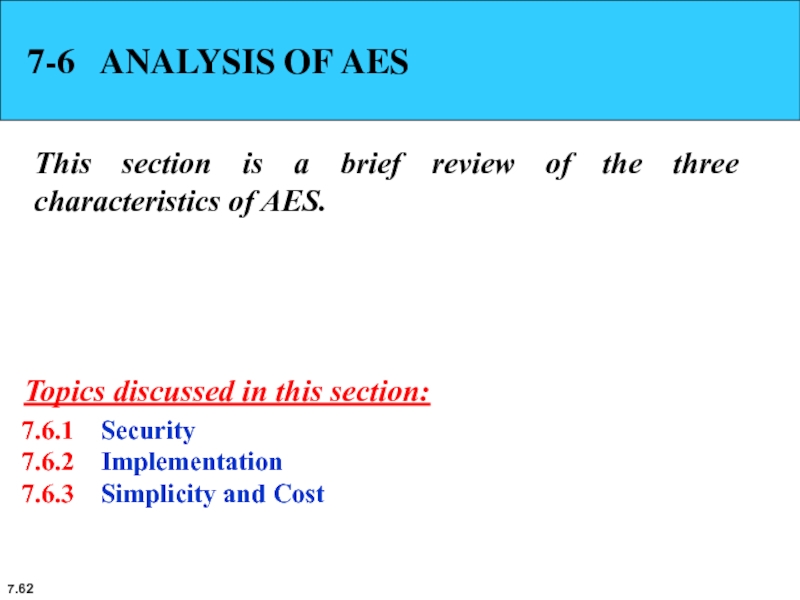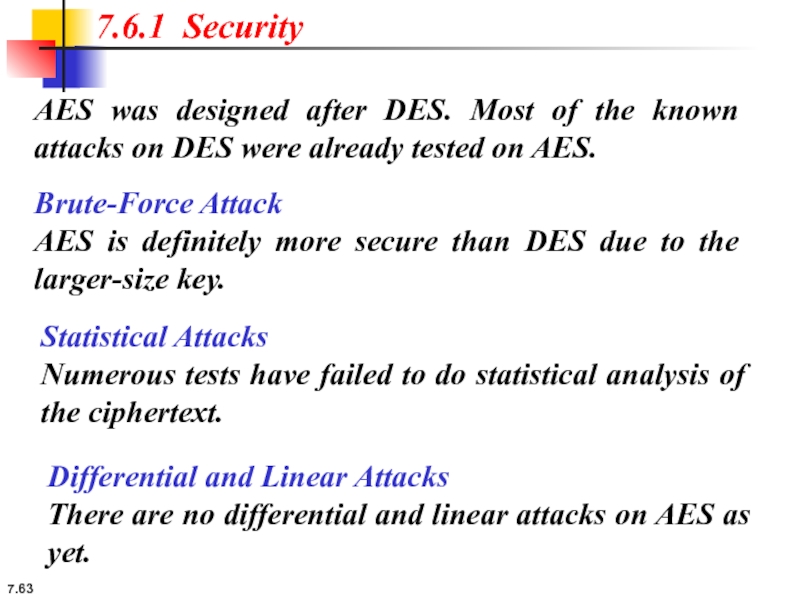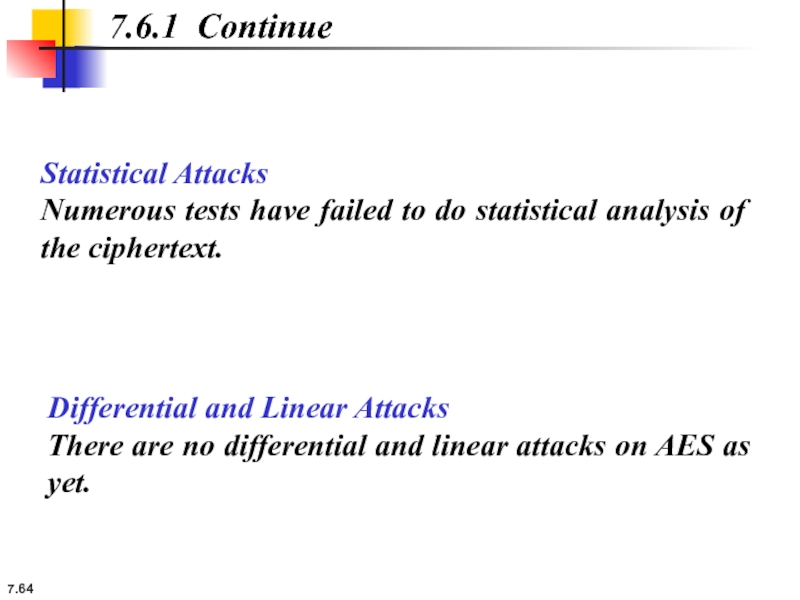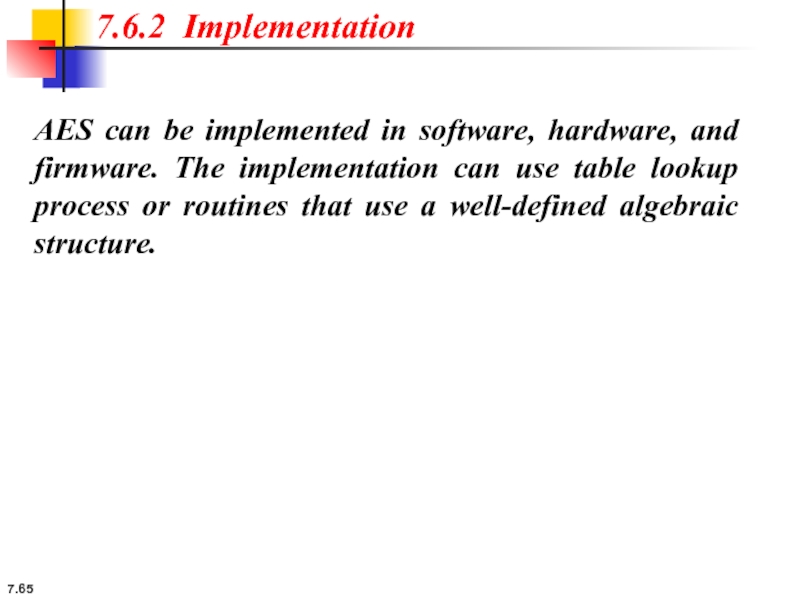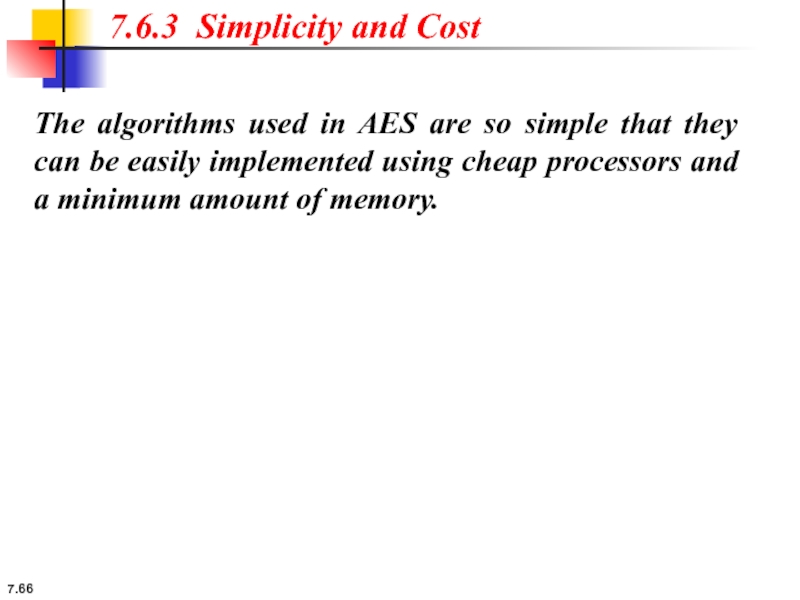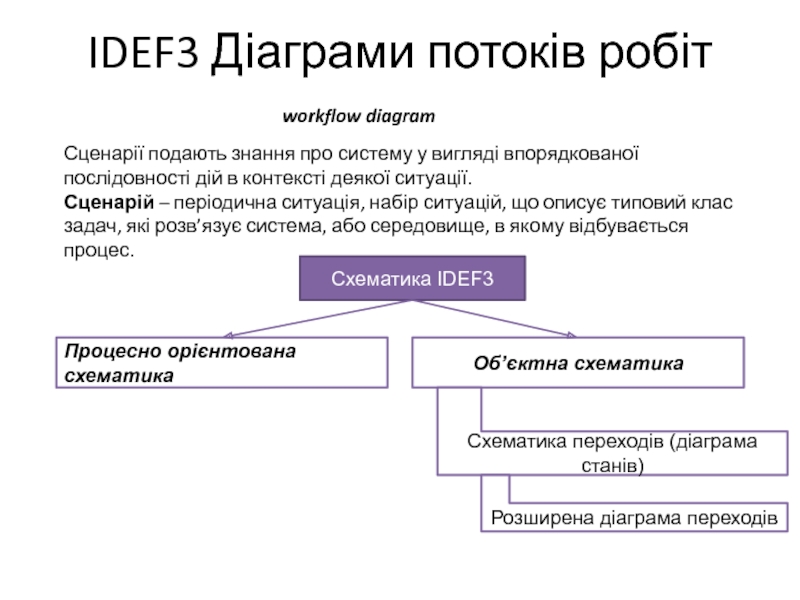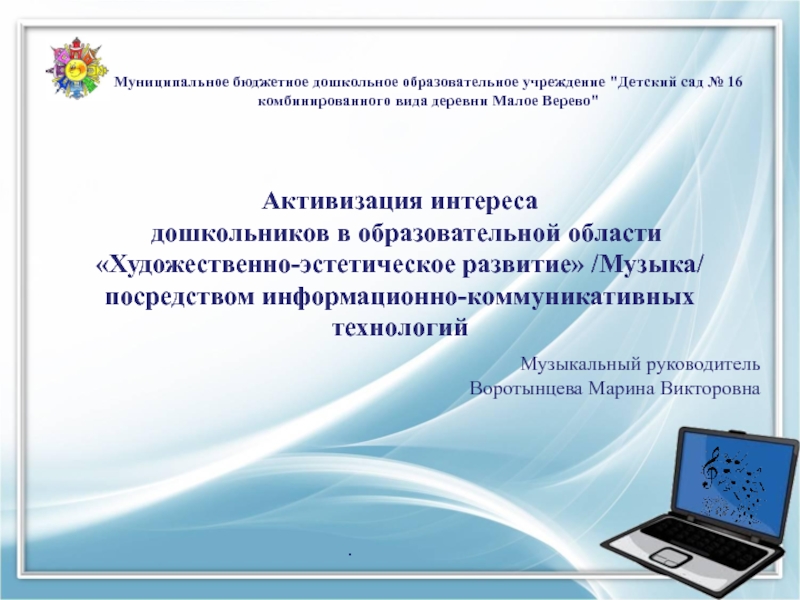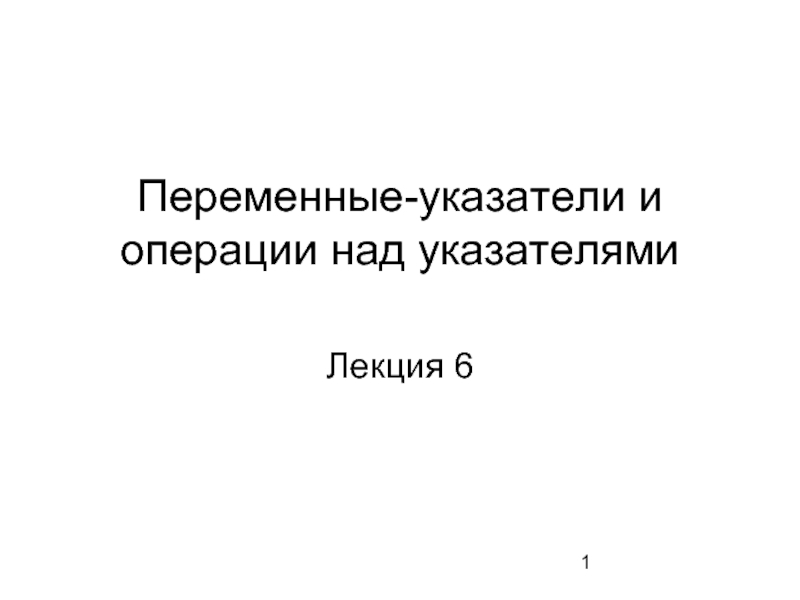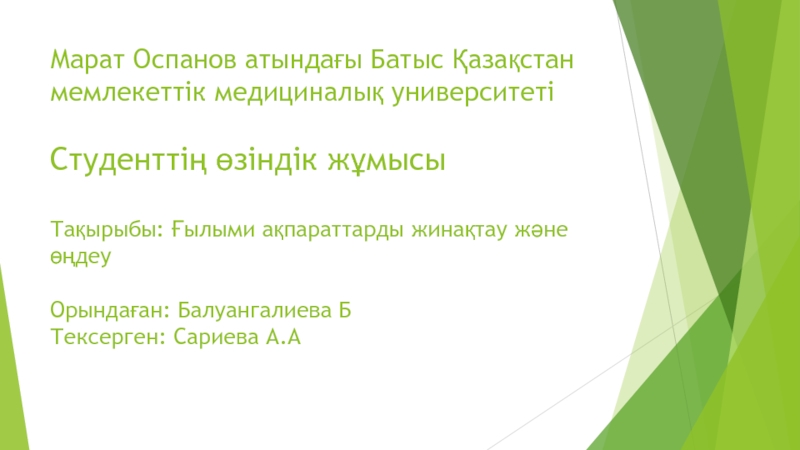Chapter 7
Advanced Encryption Standard
(AES)
- Главная
- Разное
- Дизайн
- Бизнес и предпринимательство
- Аналитика
- Образование
- Развлечения
- Красота и здоровье
- Финансы
- Государство
- Путешествия
- Спорт
- Недвижимость
- Армия
- Графика
- Культурология
- Еда и кулинария
- Лингвистика
- Английский язык
- Астрономия
- Алгебра
- Биология
- География
- Детские презентации
- Информатика
- История
- Литература
- Маркетинг
- Математика
- Медицина
- Менеджмент
- Музыка
- МХК
- Немецкий язык
- ОБЖ
- Обществознание
- Окружающий мир
- Педагогика
- Русский язык
- Технология
- Физика
- Философия
- Химия
- Шаблоны, картинки для презентаций
- Экология
- Экономика
- Юриспруденция
Advanced Encryption Standard презентация
Содержание
- 1. Advanced Encryption Standard
- 2. 7. Objectives ❏ To review a short
- 3. 7. 7-1 INTRODUCTION The
- 4. 7.
- 5. 7.
- 6. 7.
- 7. 7.
- 8. 7.
- 9. 7.
- 10. 7.
- 11. 7.
- 12. 7. 7-2 TRANSFORMATIONS To
- 13. 7.
- 14. 7. 7.2.1 Continue Figure 7.6 SubBytes transformation
- 15. 7. 7.2.1 Continue
- 16. 7. 7.2.1 Continue
- 17. 7. 7.2.1 Continue InvSubBytes
- 18. 7. 7.2.1 Continue InvSubBytes (Continued)
- 19. 7.
- 20. 7.
- 21. 7.
- 22. 7.
- 23. 7. 7.2.1 Continue
- 24. 7.
- 25. 7.
- 26. 7.
- 27. 7.
- 28. 7.
- 29. 7.
- 30. 7.
- 31. 7. 7.2.3 Continue
- 32. 7.
- 33. 7.
- 34. 7. 7.2.4 Continue Figure 7.15 AddRoundKey transformation
- 35. 7. 7-3 KEY EXPANSION
- 36. 7. 7-3 Continued
- 37. 7.
- 38. 7. 7.3.1 Continue
- 39. 7.
- 40. 7. 7.3.1 Continue
- 41. 7.
- 42. 7.
- 43. 7. 7.3.1 Continue Example 7.8 Continue
- 44. 7.
- 45. 7.
- 46. 7.
- 47. 7. 7-4 CIPHERS AES
- 48. 7.
- 49. 7.
- 50. 7.
- 51. 7.
- 52. 7.
- 53. 7.
- 54. 7. 7-5 Examples In
- 55. 7. 7-5 Continued Example 7.10 Continued
- 56. 7. 7-5 Continued Example 7.10 Continued
- 57. 7. 7-5 Continued Example 7.10 Continued
- 58. 7. 7-5 Continued Example
- 59. 7. 7-5 Continued Example
- 60. 7. 7-5 Continued Example
- 61. 7. 7-5 Continued Example
- 62. 7. 7-6 ANALYSIS OF AES
- 63. 7.
- 64. 7.
- 65. 7.
- 66. 7.
Слайд 17.
Copyright © The McGraw-Hill Companies, Inc. Permission required for reproduction or
Слайд 27.
Objectives
❏ To review a short history of AES
❏ To define the
❏ To define the transformations used by AES
❏ To define the key expansion process
❏ To discuss different implementations
Chapter 7
Слайд 37.
7-1 INTRODUCTION
The Advanced Encryption Standard (AES) is a symmetric-key block
7.1.1 History
7.1.2 Criteria
7.1.3 Rounds
7.1.4 Data Units
7.1.5 Structure of Each Round
Topics discussed in this section:
Слайд 47.
7.1.1 History.
In February 2001, NIST announced that a draft of the
Слайд 57.
7.1.2 Criteria
The criteria defined by NIST for selecting AES fall into
1. Security
2. Cost
3. Implementation.
Слайд 67.
7.1.3 Rounds.
AES is a non-Feistel cipher that encrypts and decrypts a
AES has defined three versions, with 10, 12, and 14 rounds.
Each version uses a different cipher key size (128, 192, or 256), but the round keys are always 128 bits.
Слайд 127.
7-2 TRANSFORMATIONS
To provide security, AES uses four types of transformations:
7.2.1 Substitution
7.2.2 Permutation
7.2.3 Mixing
7.2.4 Key Adding
Topics discussed in this section:
Слайд 137.
7.2.1 Substitution
AES, like DES, uses substitution. AES uses two invertible transformations.
SubBytes
The
The SubBytes operation involves 16 independent byte-to-byte transformations.
Слайд 197.
7.2.1 Continue
Example 7.2
Figure 7.7 shows how a state is transformed using
Figure 7.7 SubBytes transformation for Example 7.2
Слайд 207.
7.2.1 Continue
Transformation Using the GF(28) Field
AES also defines the transformation algebraically
The SubBytes and InvSubBytes transformations are inverses of each other.
Слайд 227.
7.2.1 Continue
Example 7.3
Let us show how the byte 0C is transformed
routine and transformed back to 0C by the invsubbyte routine.
Слайд 247.
7.2.2 Permutation
Another transformation found in a round is shifting, which permutes
ShiftRows
In the encryption, the transformation is called ShiftRows.
Figure 7.9 ShiftRows transformation
Слайд 257.
InvShiftRows
In the decryption, the transformation is called InvShiftRows and the shifting
7.2.2 Continue
Слайд 267.
7.2.2 Continue
Example 7.4
Figure 7.10 shows how a state is transformed using
Figure 7.10 ShiftRows transformation in Example 7.4
Слайд 277.
7.2.3 Mixing
We need an interbyte transformation that changes the bits inside
Figure 7.11 Mixing bytes using matrix multiplication
Слайд 297.
MixColumns
The MixColumns transformation operates at the column level; it transforms each
7.2.3 Continue
Figure 7.13 MixColumns transformation
Слайд 307.
InvMixColumns
The InvMixColumns transformation is basically the same as the MixColumns transformation.
7.2.3 Continue
The MixColumns and InvMixColumns transformations are inverses of each other.
Слайд 327.
7.2.3 Continue
Example 7.5
Figure 7.14 shows how a state is transformed using
Figure 7.14 The MixColumns transformation in Example 7.5
Слайд 337.
7.2.4 Key Adding
AddRoundKey
AddRoundKey proceeds one column at a time. AddRoundKey adds
The AddRoundKey transformation is the inverse of itself.
Слайд 357.
7-3 KEY EXPANSION
To create round keys for each round, AES
7.3.1 Key Expansion in AES-128
7.3.2 Key Expansion in AES-192 and AES-256
7.3.3 Key-Expansion Analysis
Topics discussed in this section:
Слайд 397.
7.3.1 Continue
The key-expansion routine can either use the above table when
Слайд 417.
7.3.1 Continue
Example 7.6
Table 7.5 shows how the keys for each round
Слайд 427.
7.3.1 Continue
Example 7.7
Each round key in AES depends on the previous
Example 7.8
The two sets of round keys can be created from two cipher keys that are different only in one bit.
Слайд 447.
7.3.1 Continue
Example 7.9
The concept of weak keys, as we discussed for
The words in the pre-round and the first round are all the same. In the second round, the first word matches with the third; the second word matches with the fourth. However, after the second round the pattern disappears; every word is different.
Слайд 457.
7.3.2 Key Expansion in AES-192 and AES-256
Key-expansion algorithms in the AES-192
Слайд 467.
7.3.3 Key-Expansion Analysis
The key-expansion mechanism in AES has been designed to
Слайд 477.
7-4 CIPHERS
AES uses four types of transformations for encryption and
7.4.1 Original Design
7.4.2 Alternative Design
Topics discussed in this section:
Слайд 497.
Algorithm
The code for the AES-128 version of this design is shown
7.4.1 Continue
Слайд 537.
Changing Key-Expansion Algorithm
Instead of using InvRoundKey transformation in the reverse cipher,
7.4.2 Continue
Слайд 547.
7-5 Examples
In this section, some examples of encryption/ decryption and
Example 7.10
The following shows the ciphertext block created from a plaintext block using a randomly selected cipher key.
Слайд 587.
7-5 Continued
Example 7.11
Figure 7.21 shows the state entries in one
Figure 7.21 States in a single round
Слайд 597.
7-5 Continued
Example 7.12
One may be curious to see the result
Слайд 607.
7-5 Continued
Example 7.13
Let us check the avalanche effect that we
Слайд 617.
7-5 Continued
Example 7.14
The following shows the effect of using a
Слайд 627.
7-6 ANALYSIS OF AES
This section is a brief review of
7.6.1 Security
7.6.2 Implementation
7.6.3 Simplicity and Cost
Topics discussed in this section:
Слайд 637.
7.6.1 Security
AES was designed after DES. Most of the known attacks
Brute-Force Attack
AES is definitely more secure than DES due to the larger-size key.
Statistical Attacks
Numerous tests have failed to do statistical analysis of the ciphertext.
Differential and Linear Attacks
There are no differential and linear attacks on AES as yet.
Слайд 647.
7.6.1 Continue
Statistical Attacks
Numerous tests have failed to do statistical analysis of
Differential and Linear Attacks
There are no differential and linear attacks on AES as yet.

